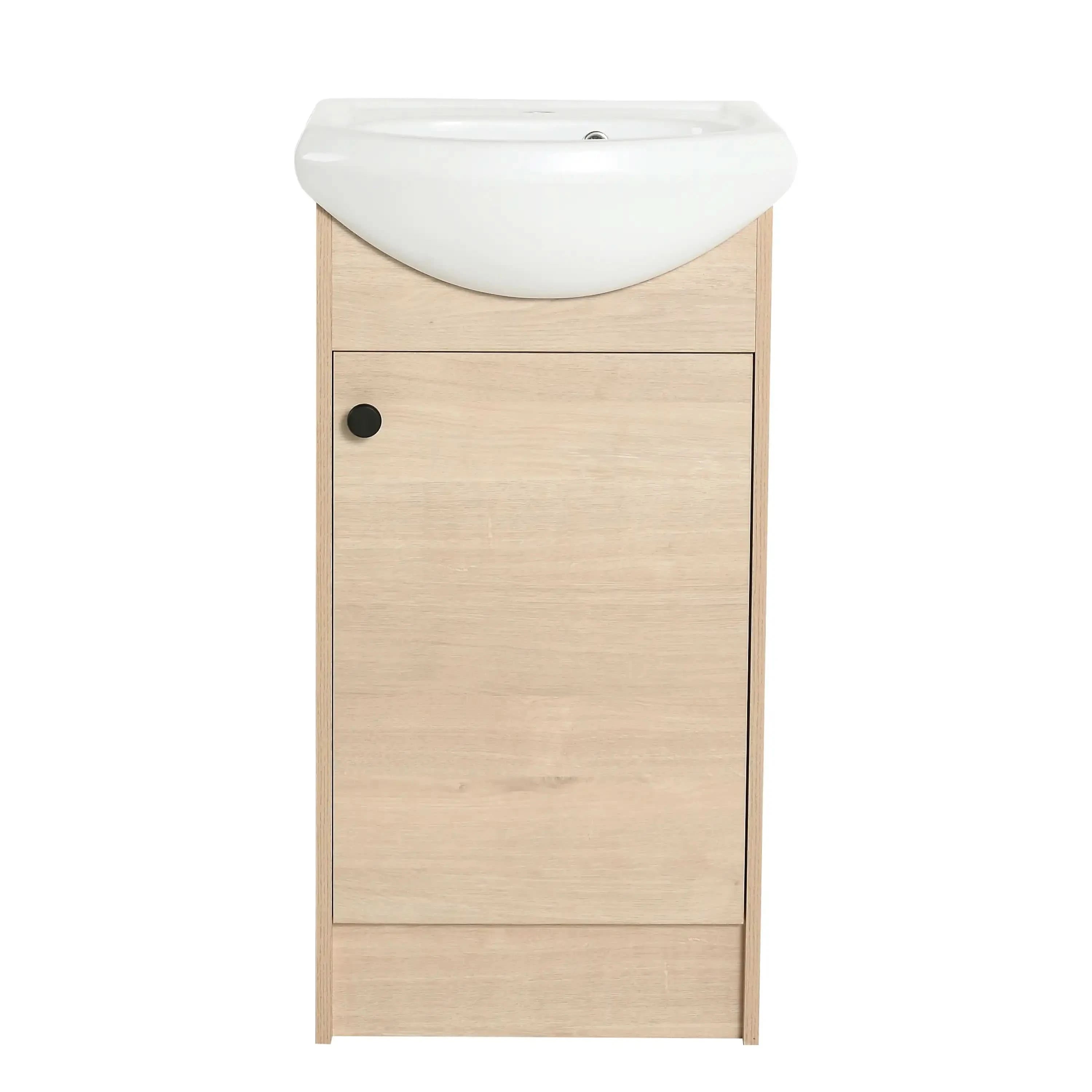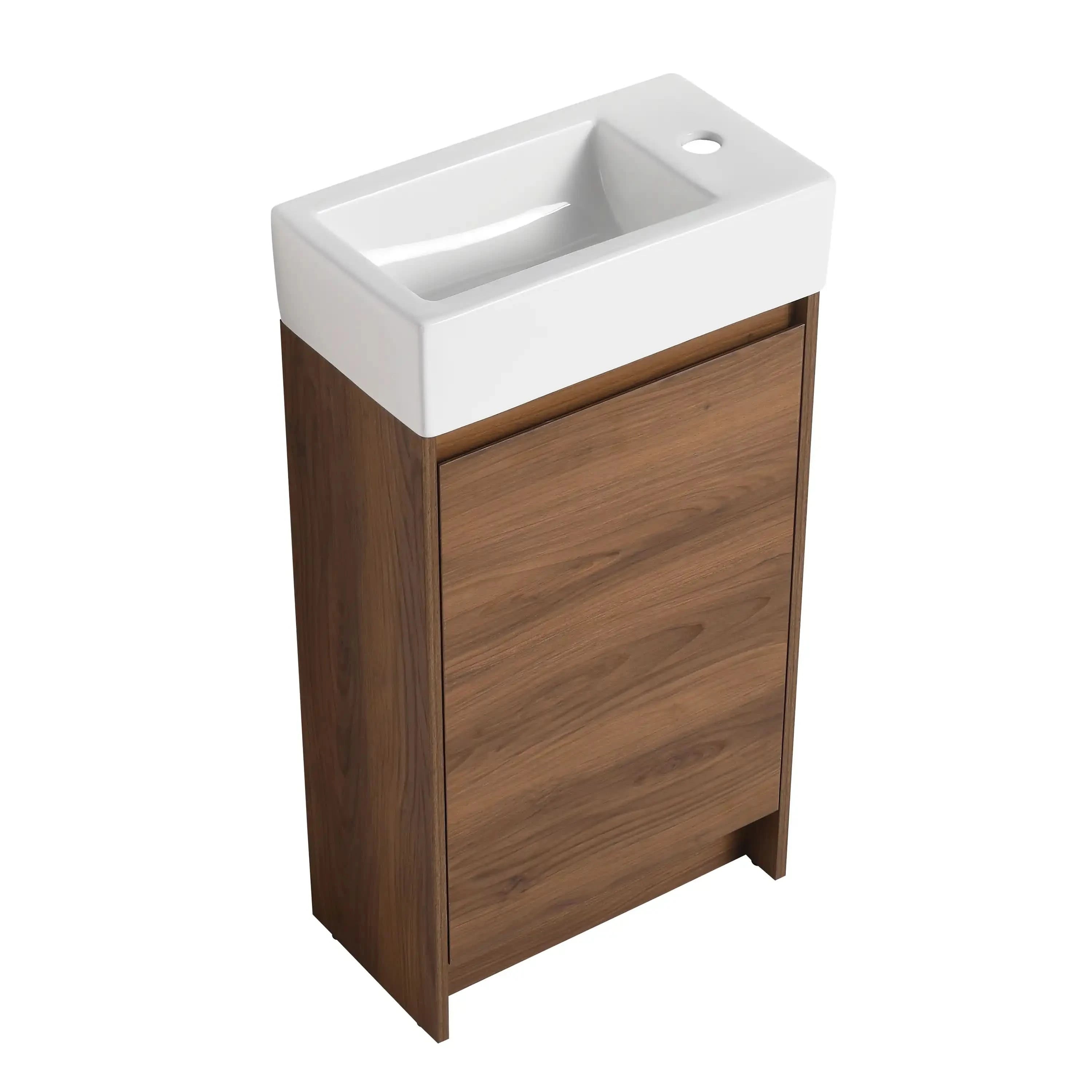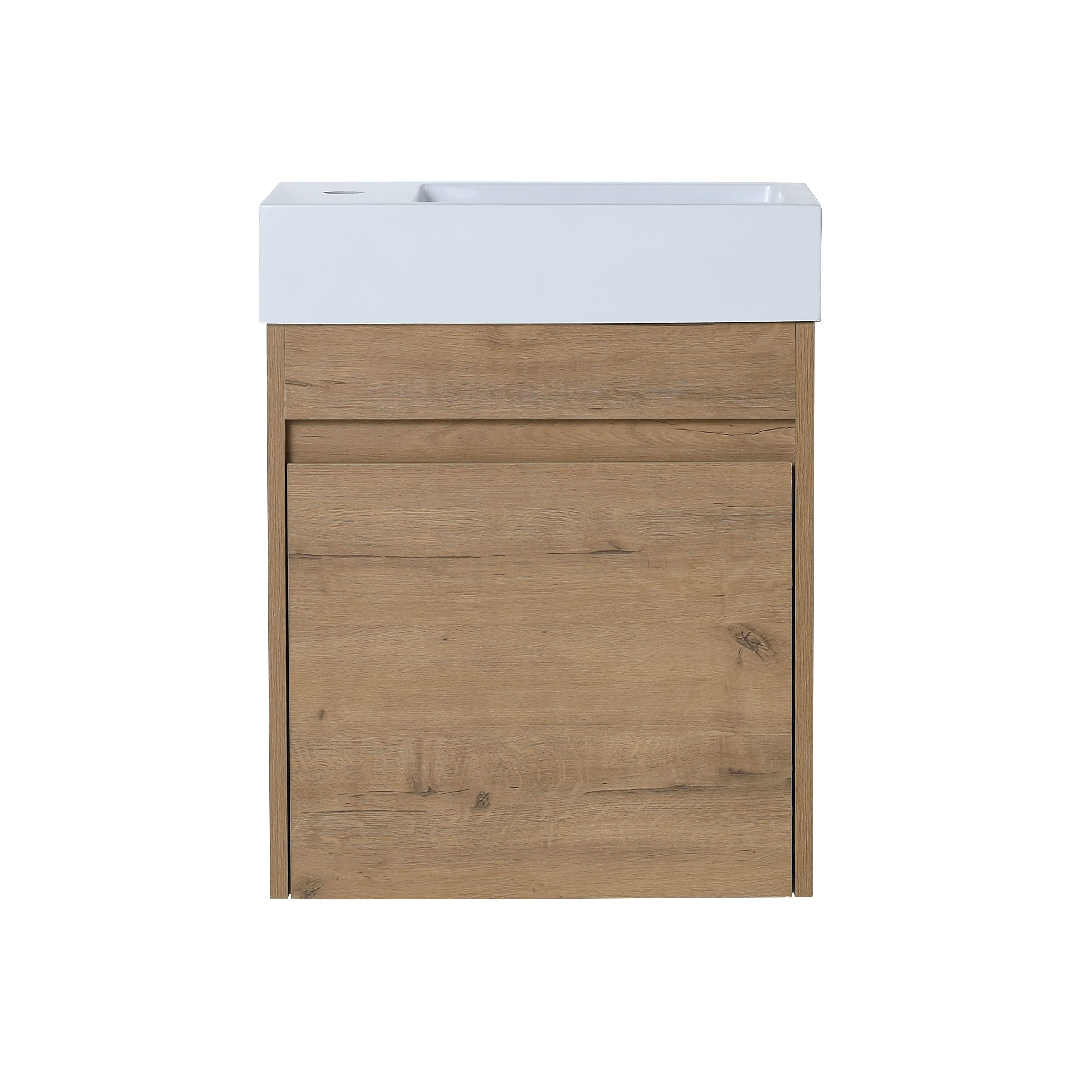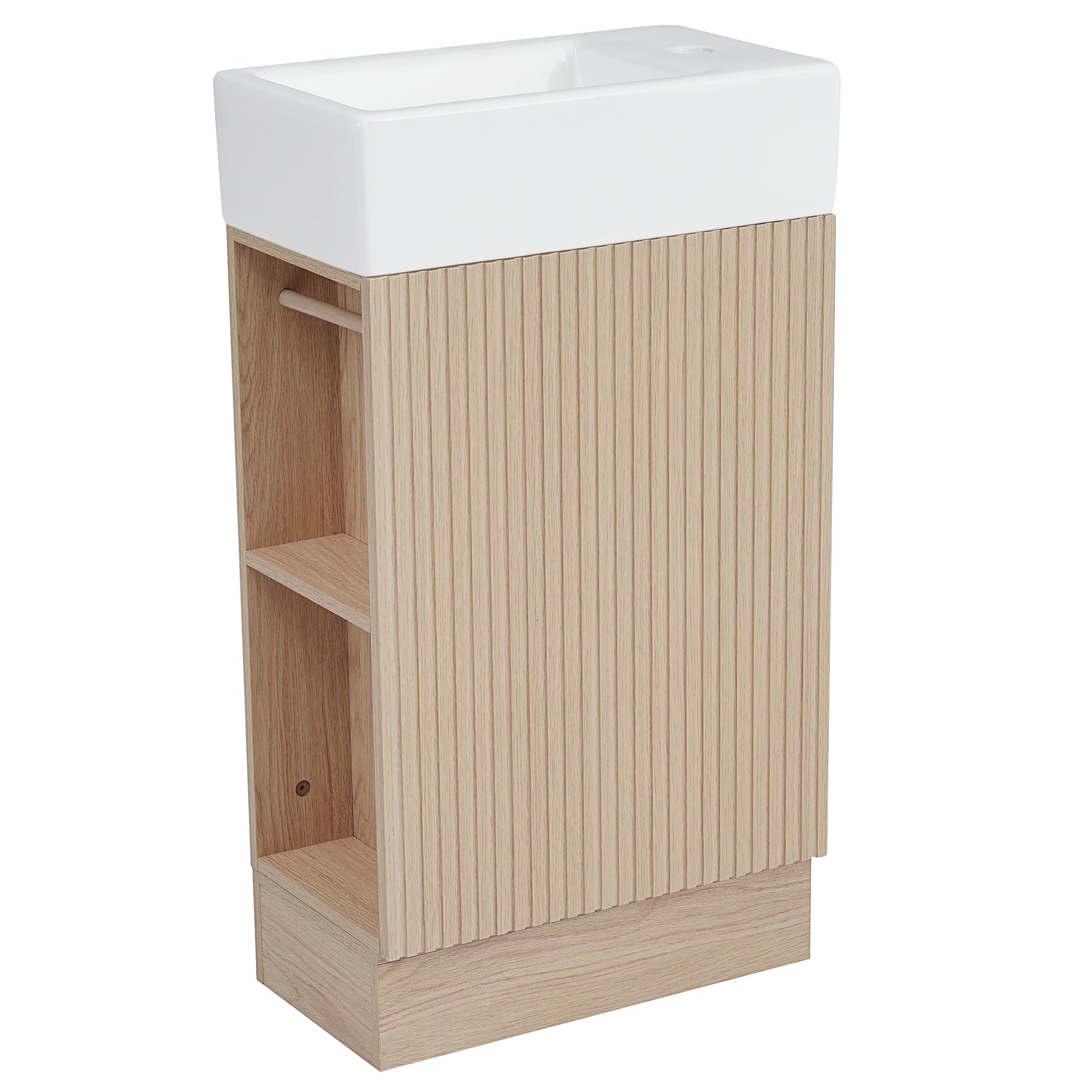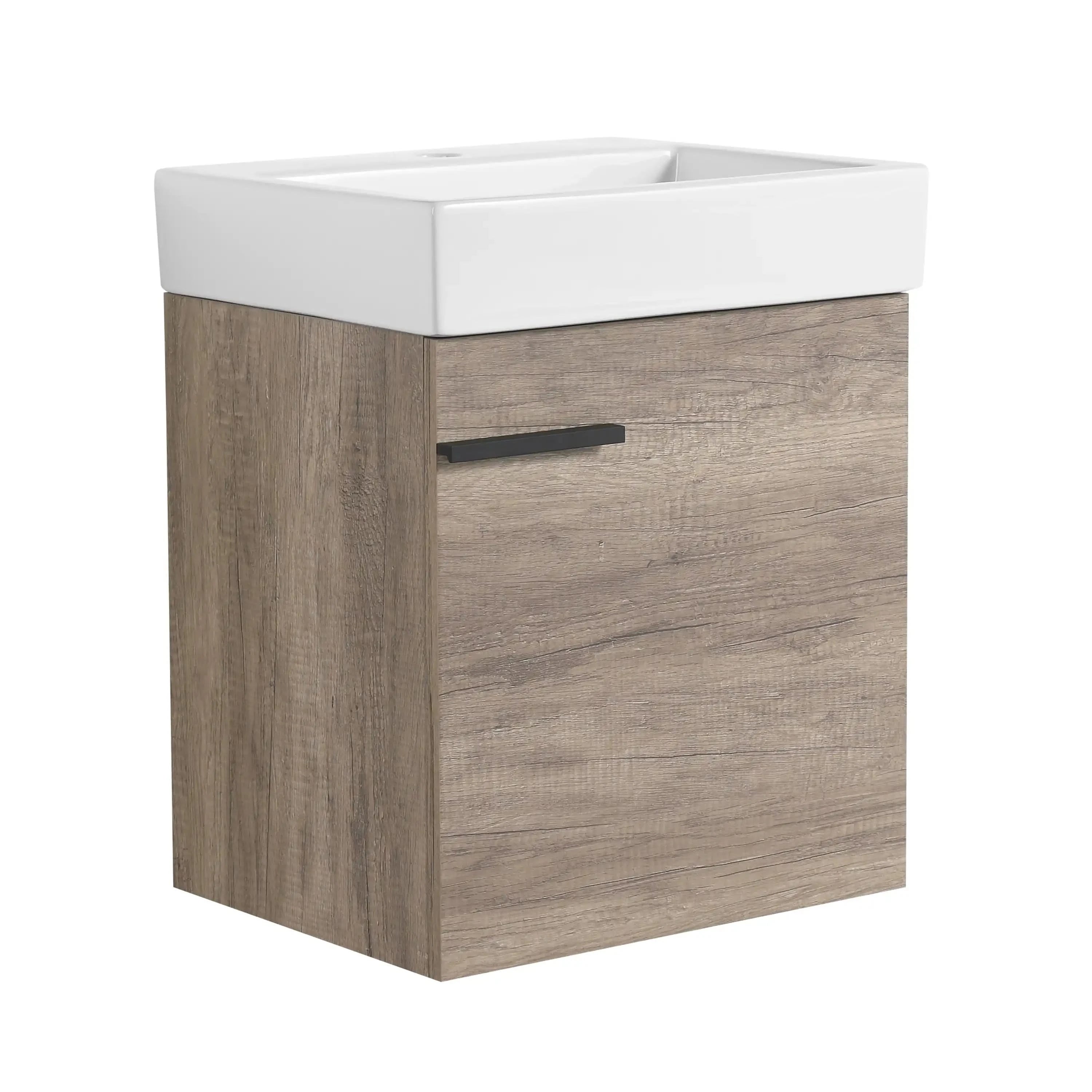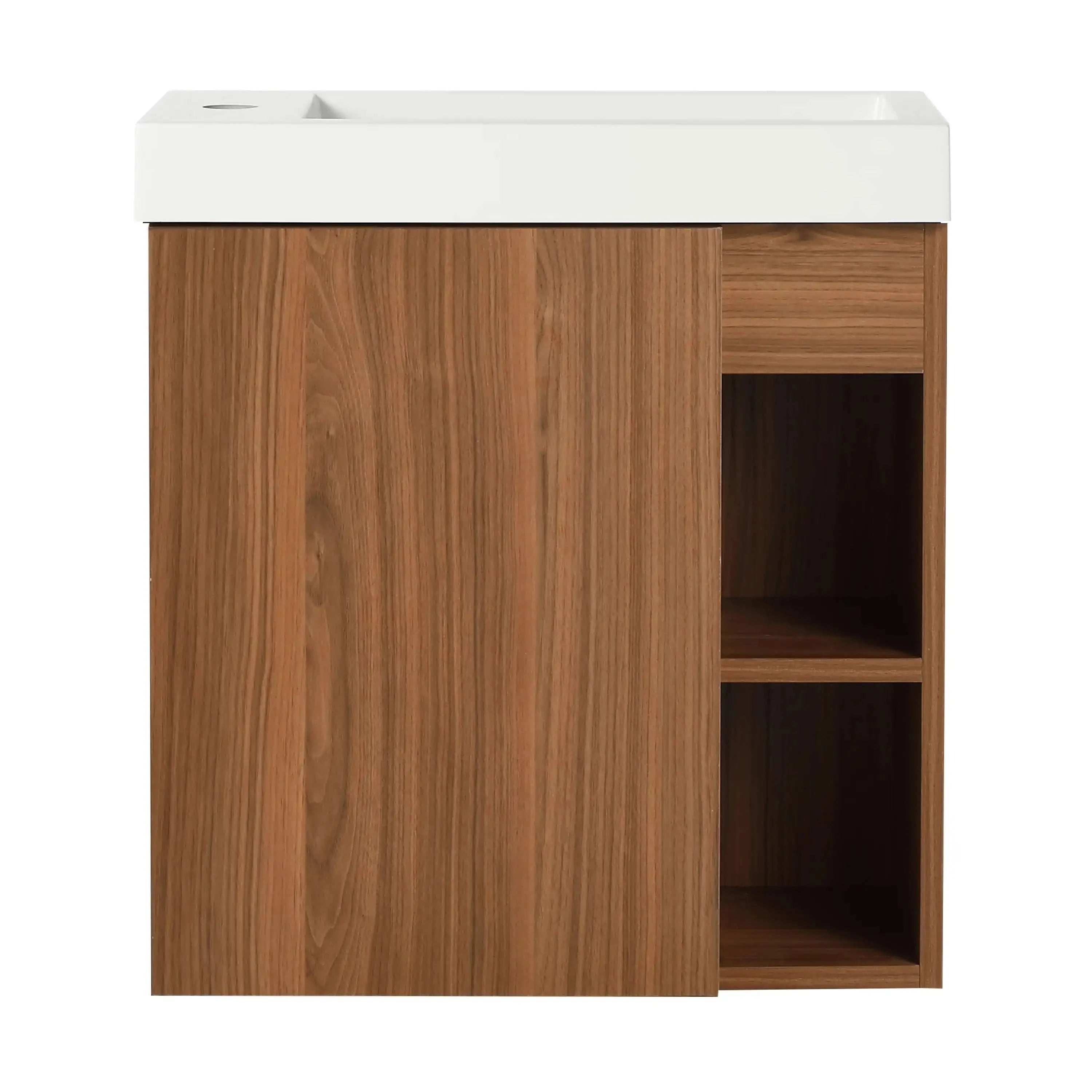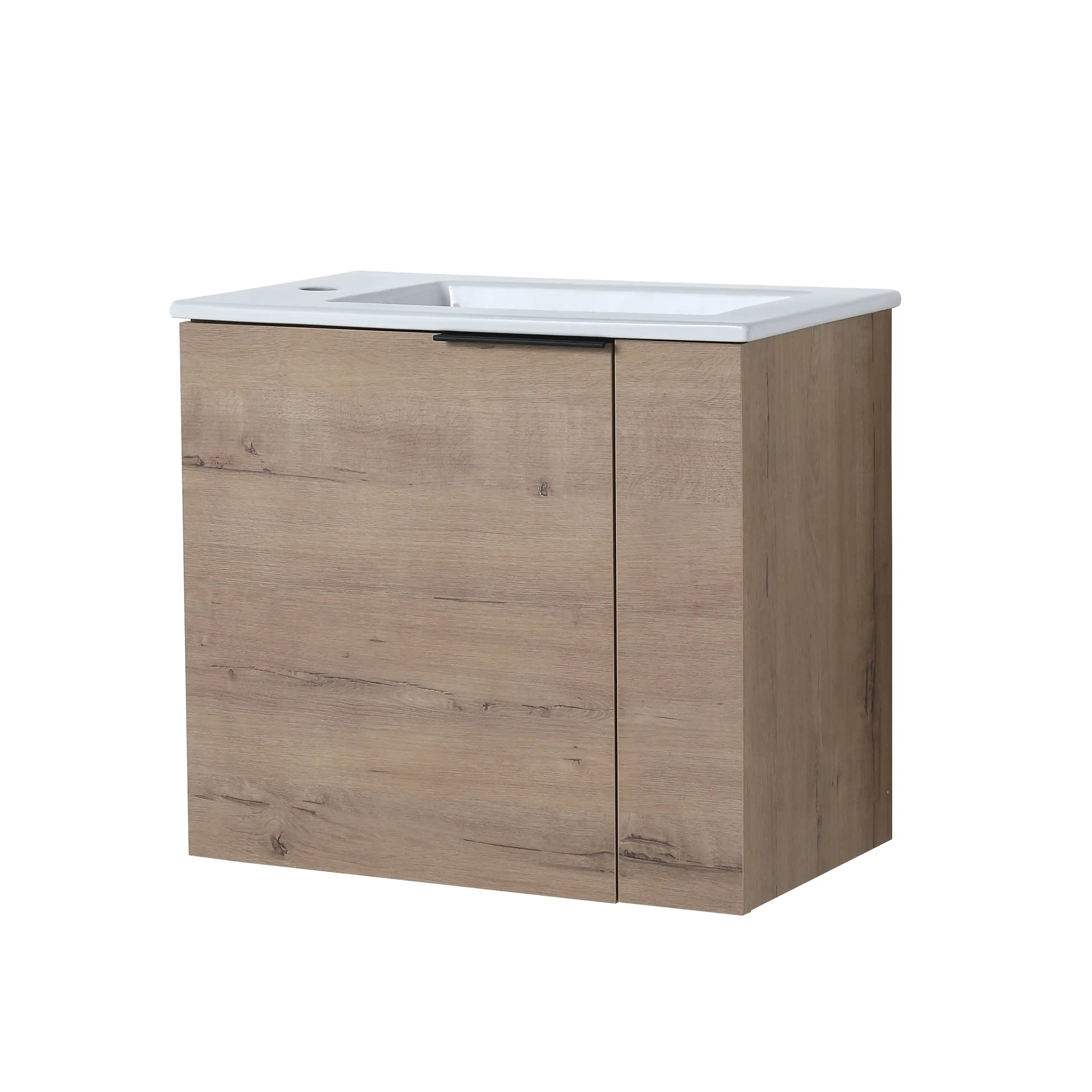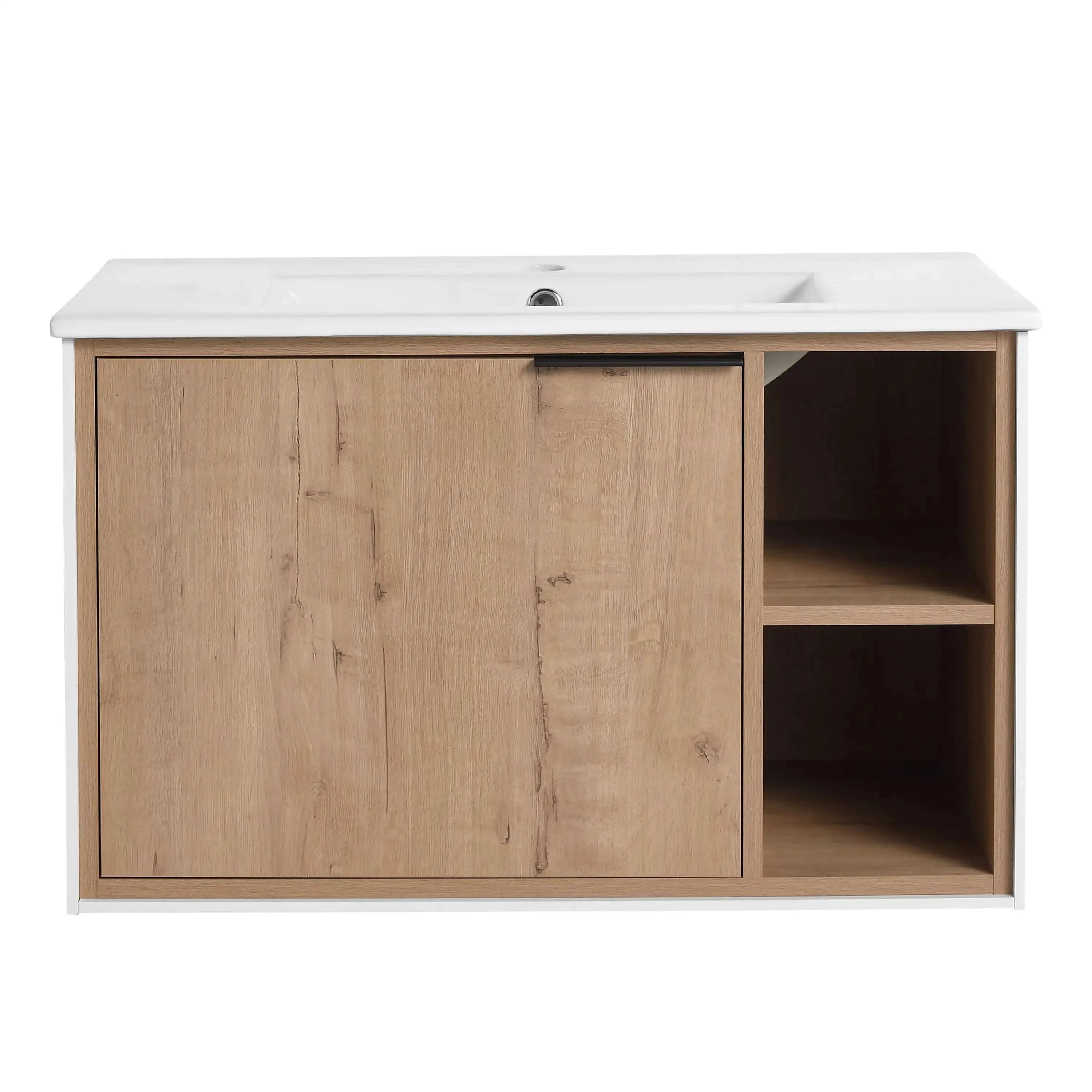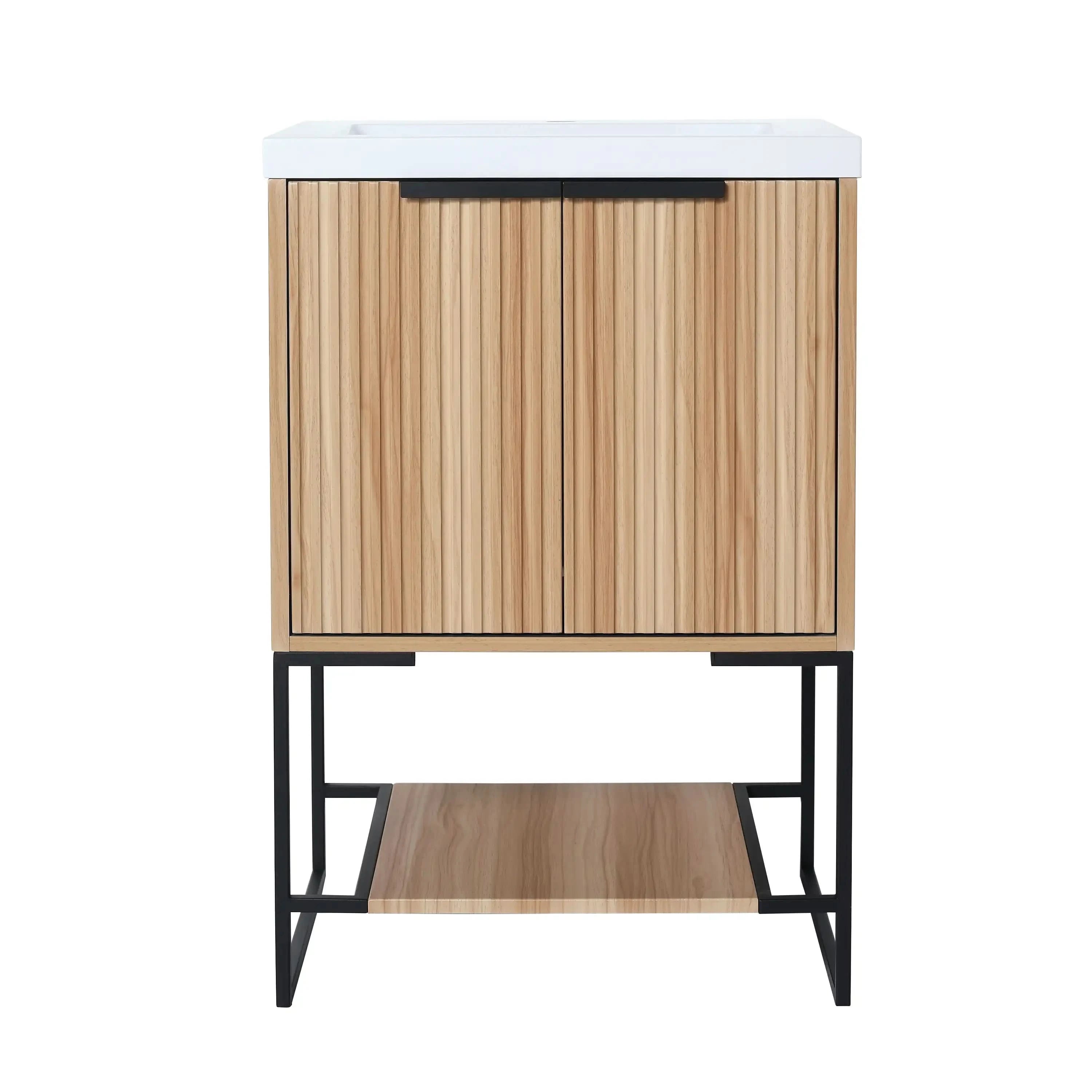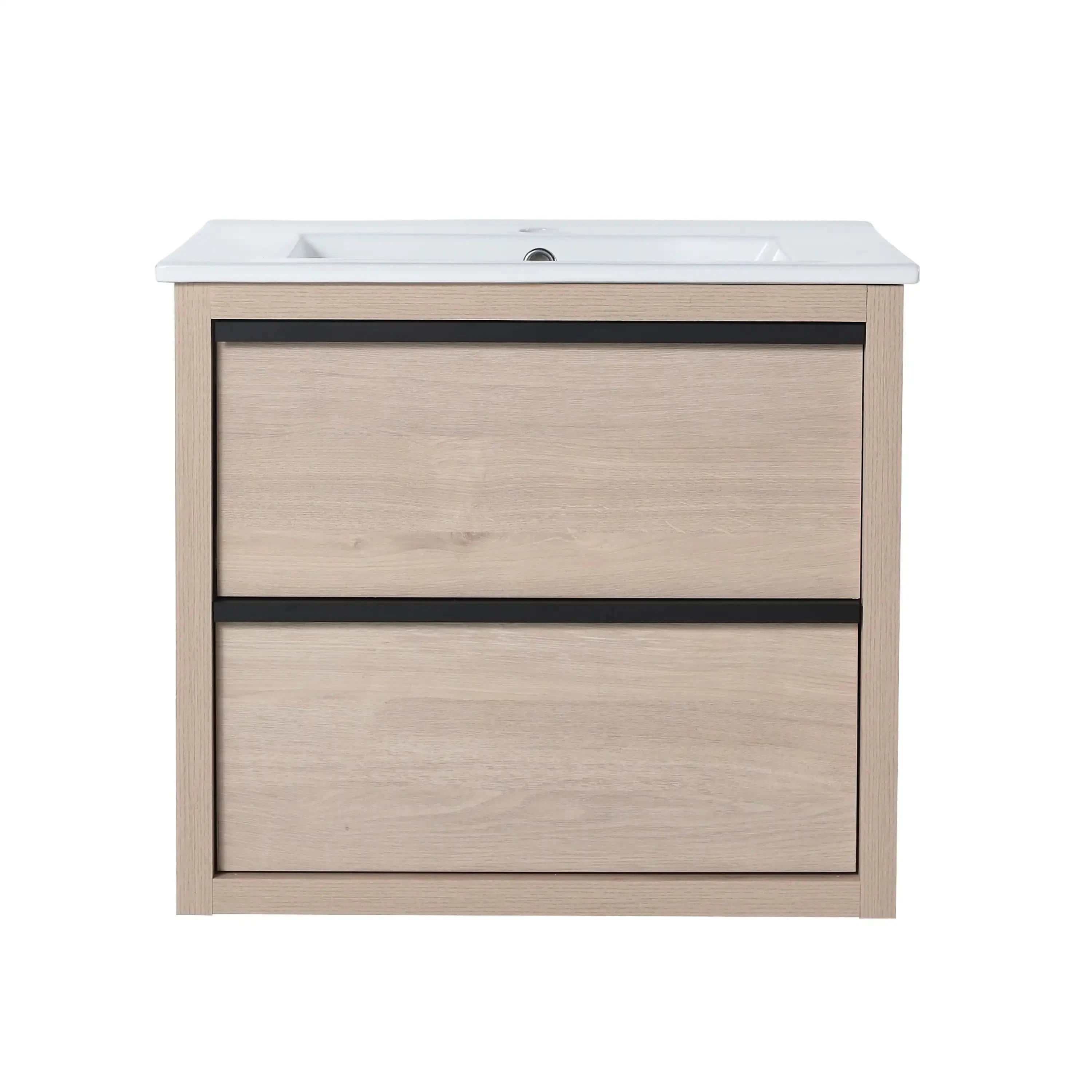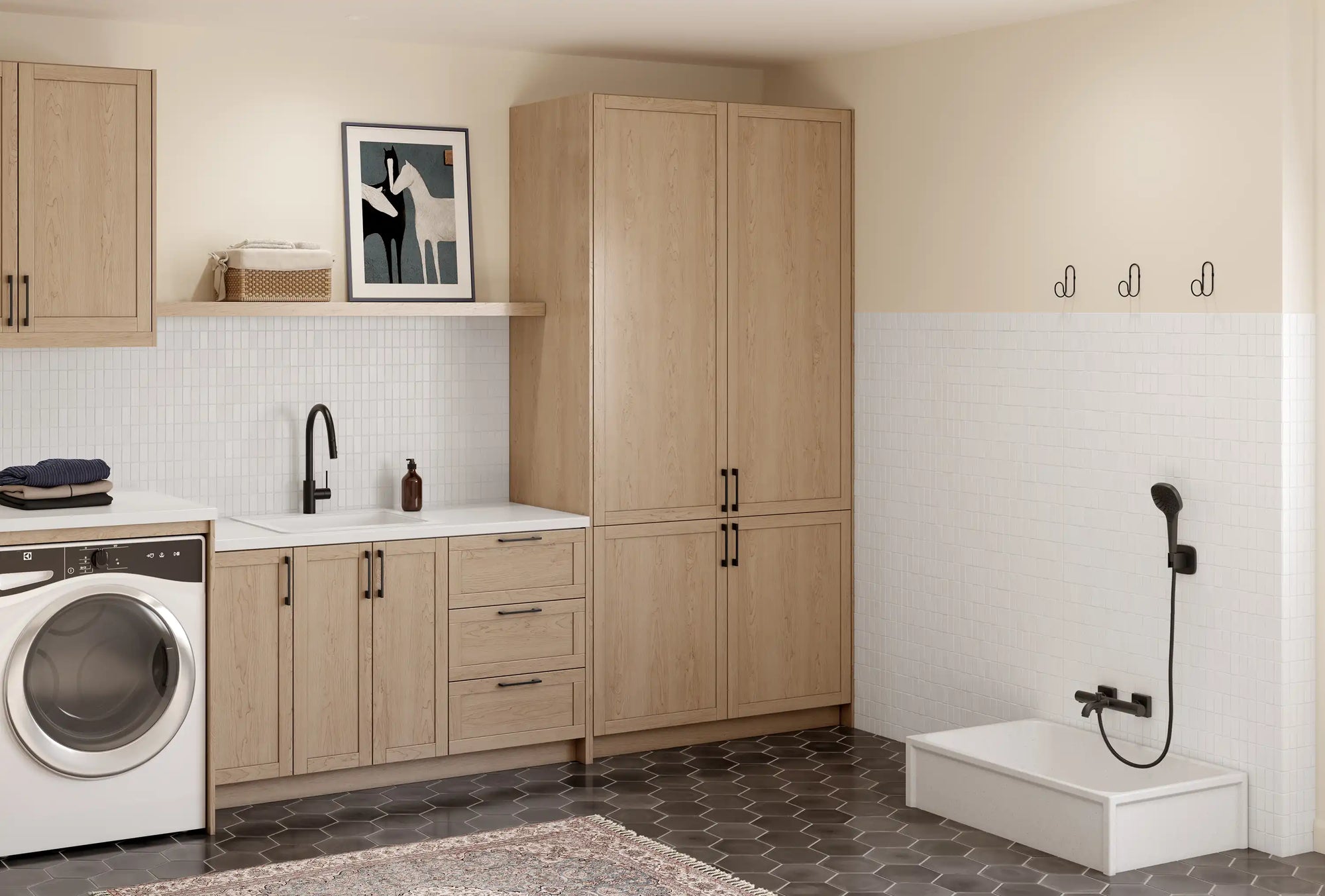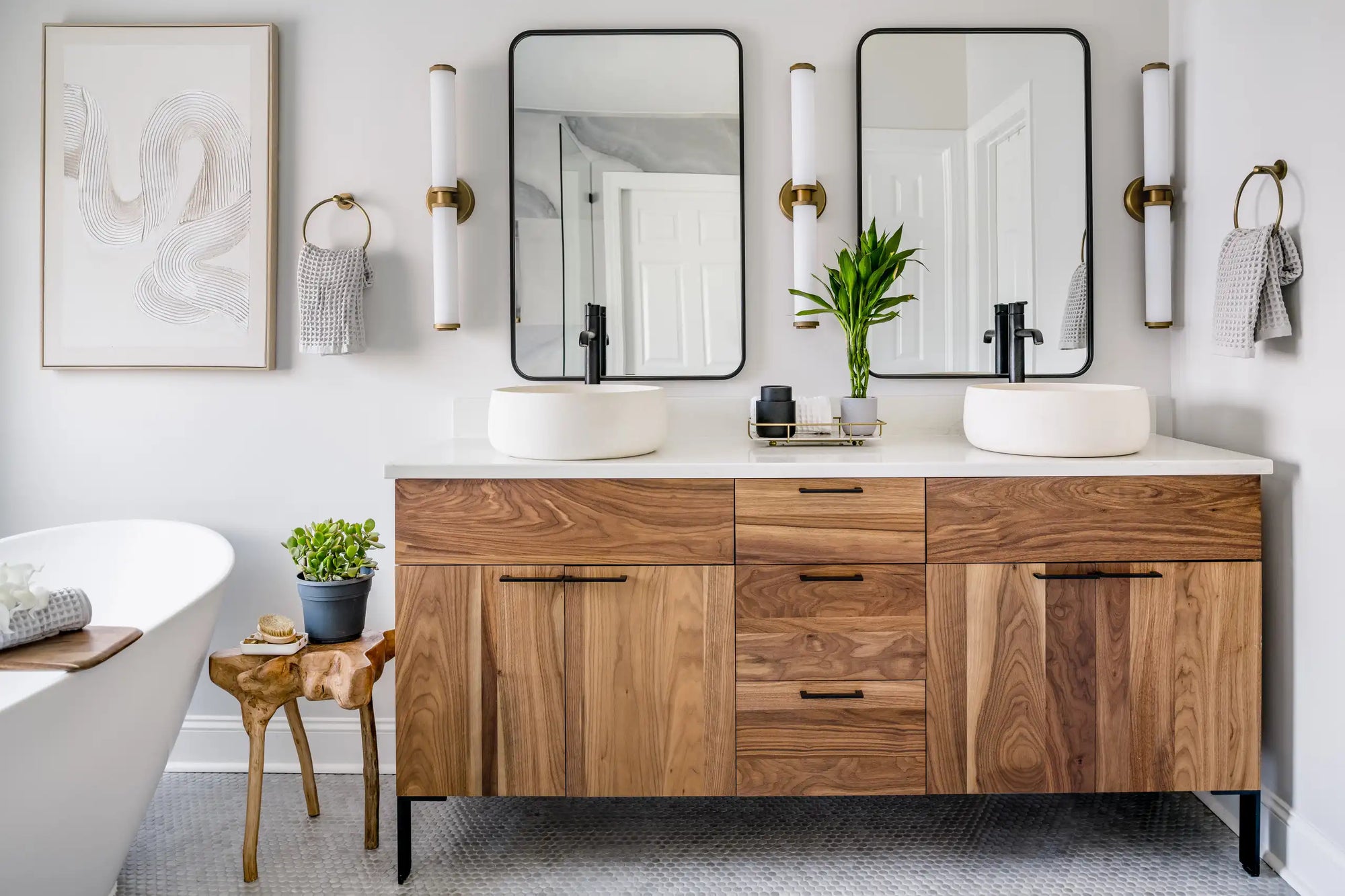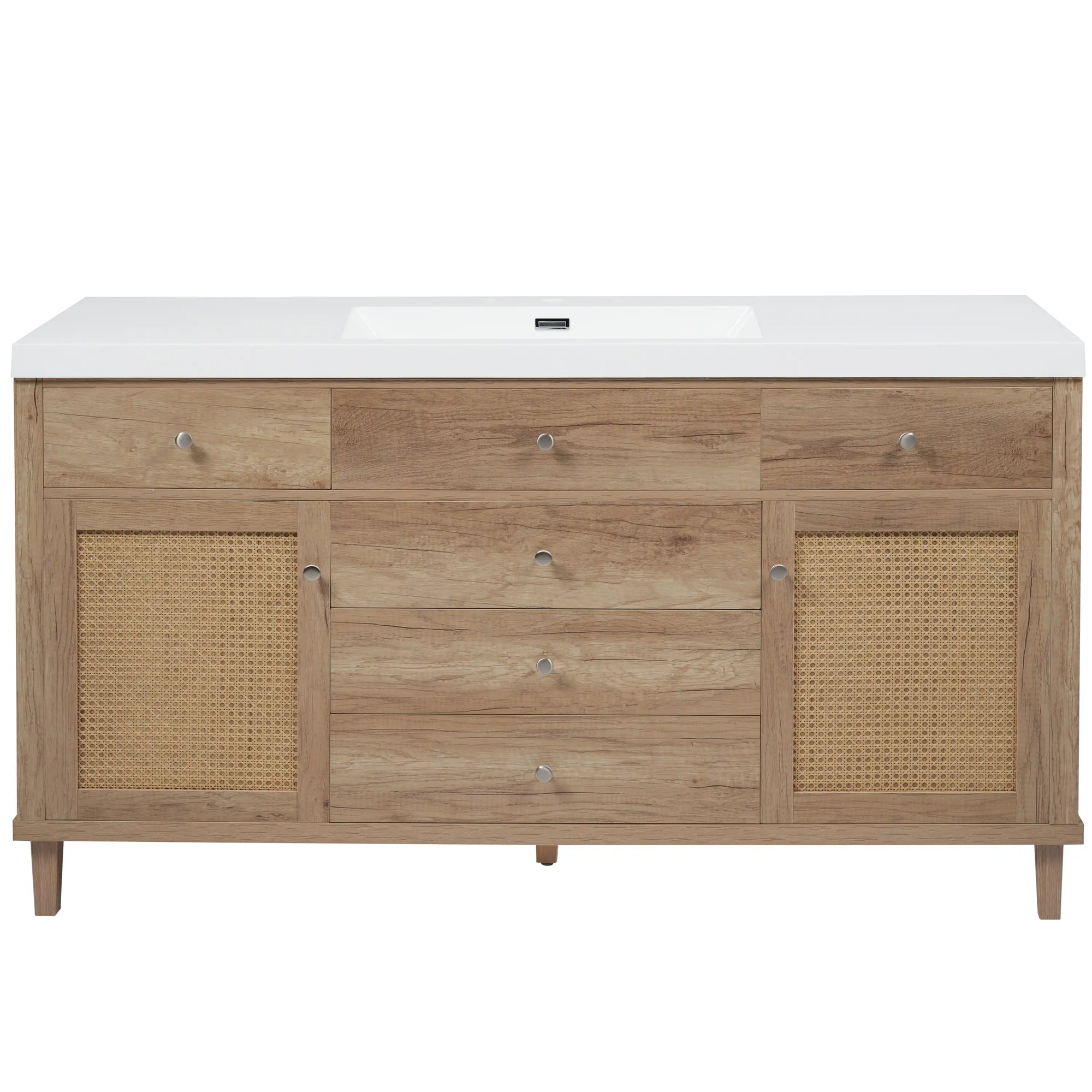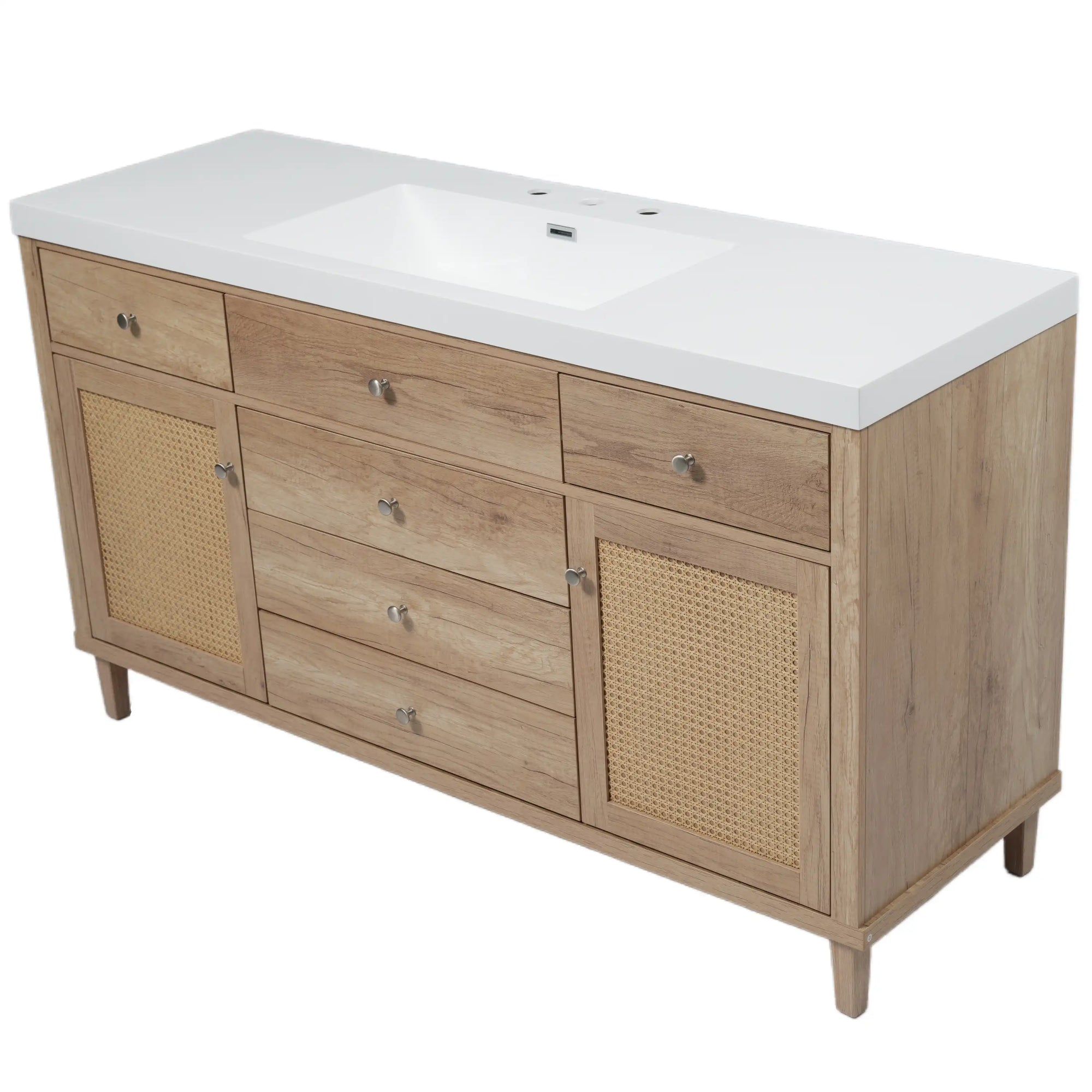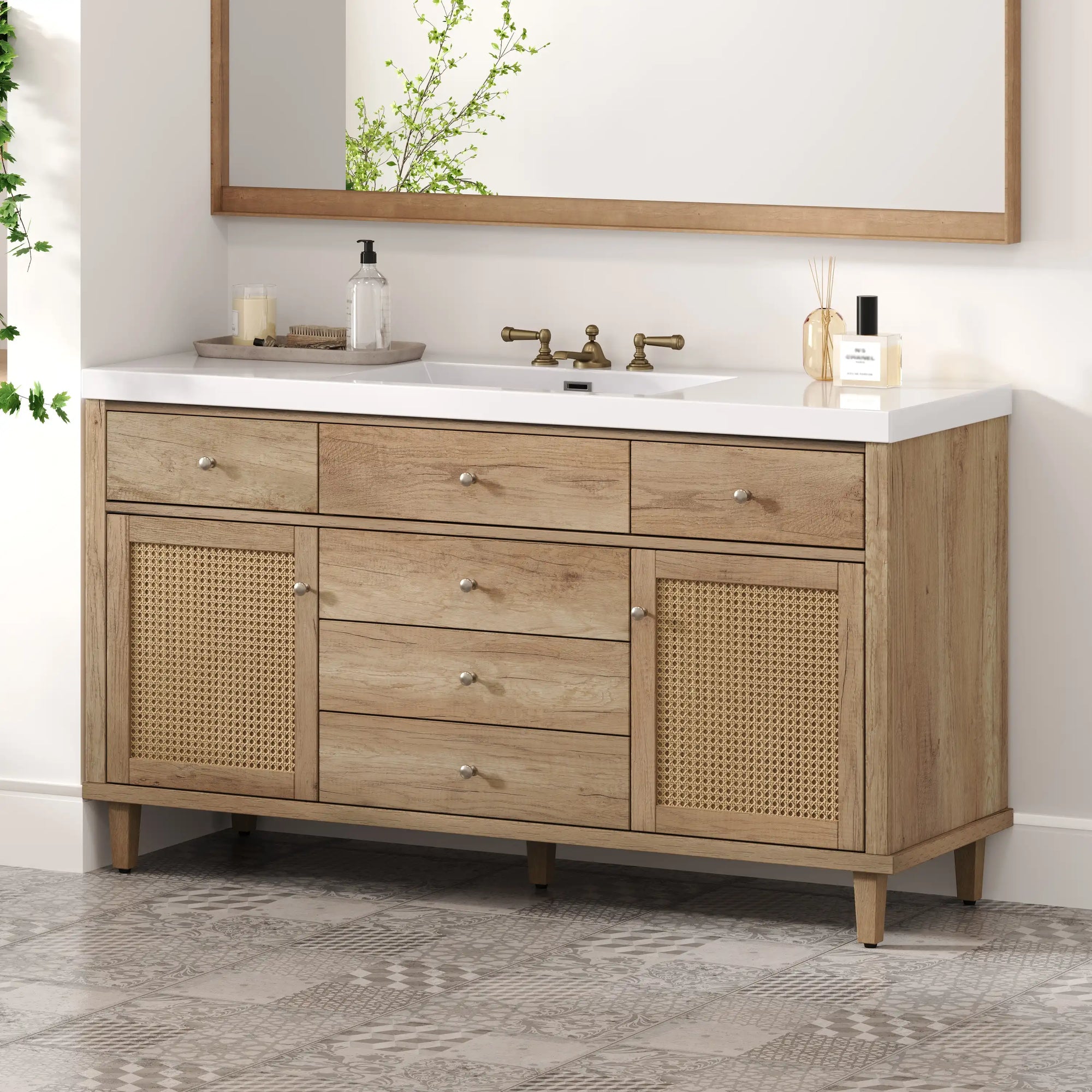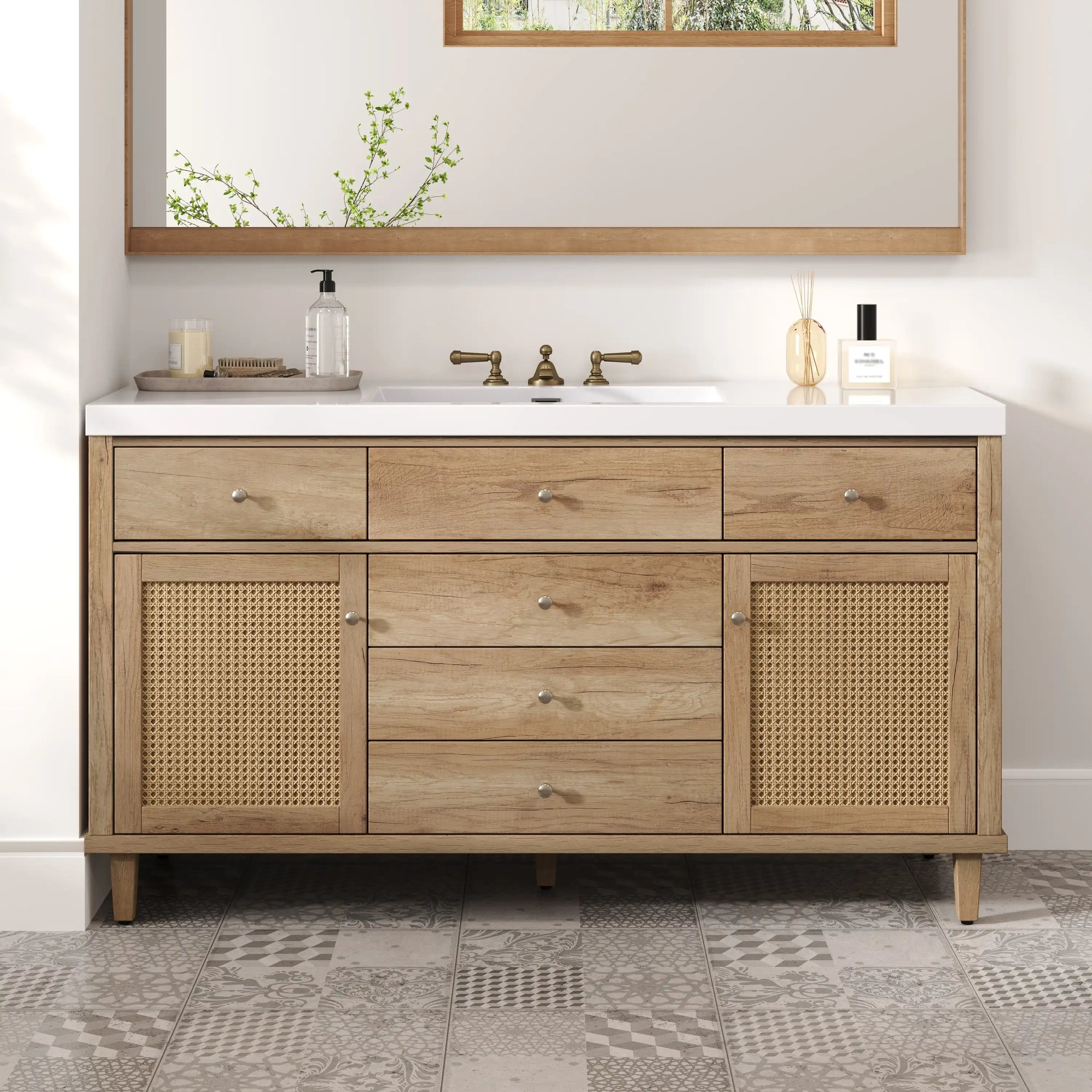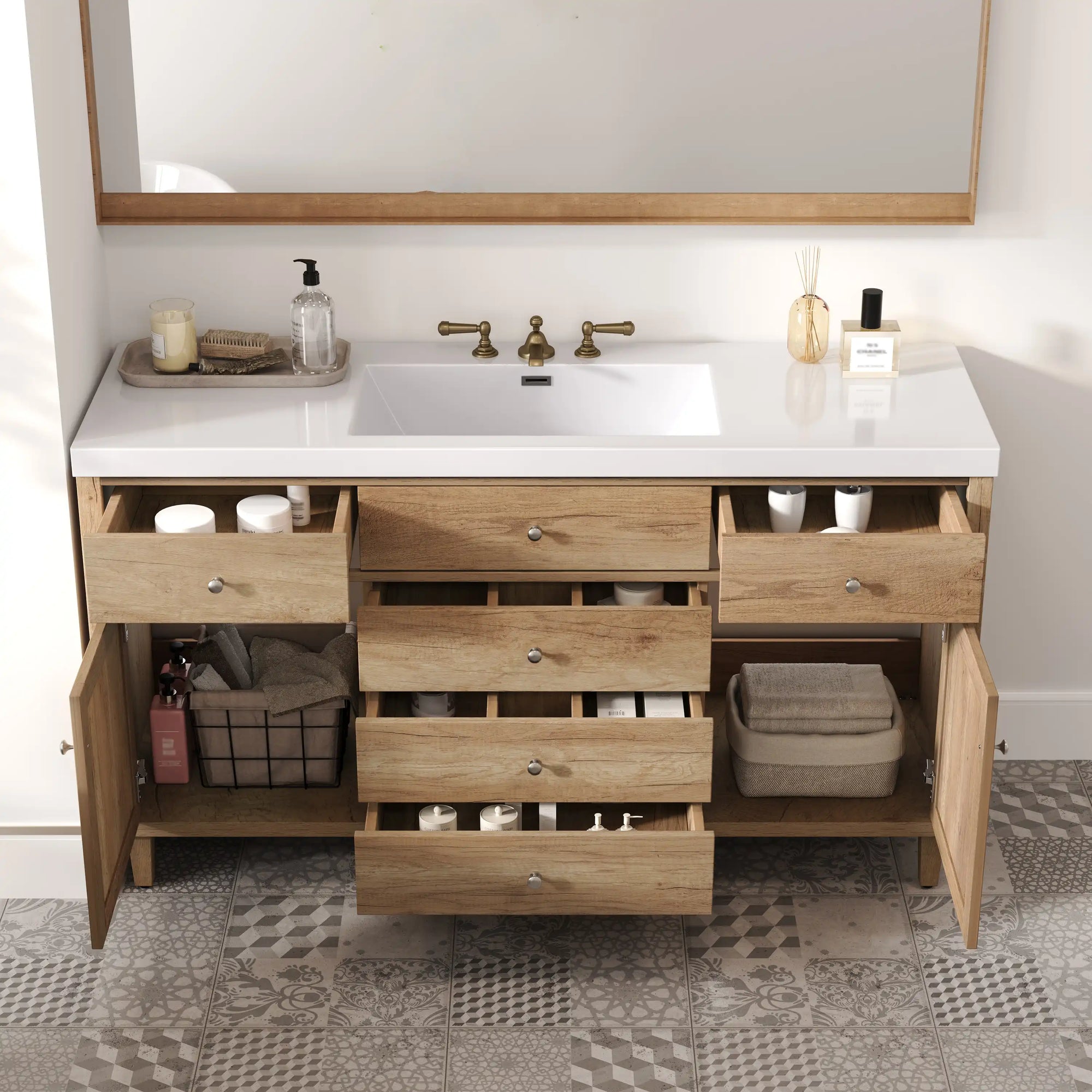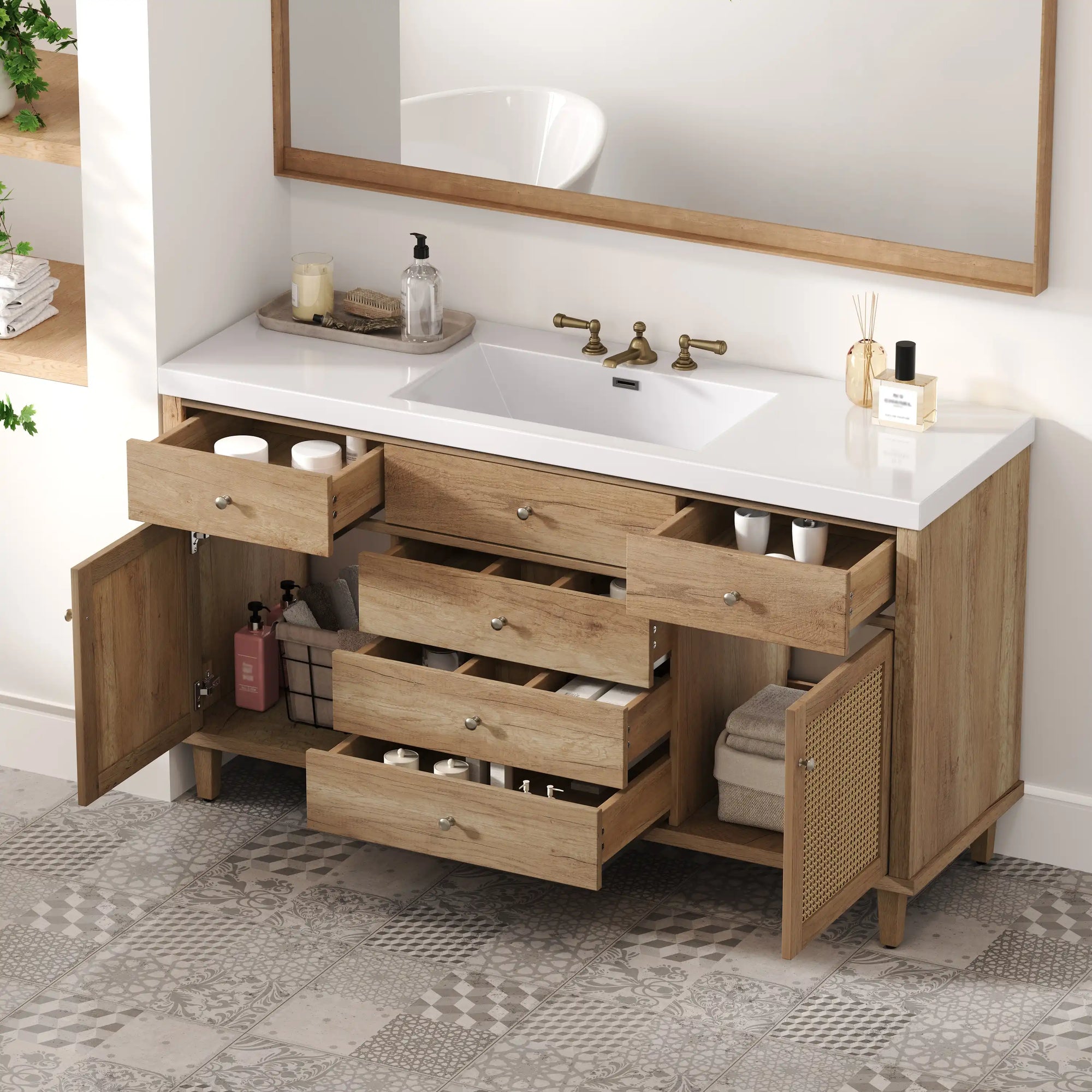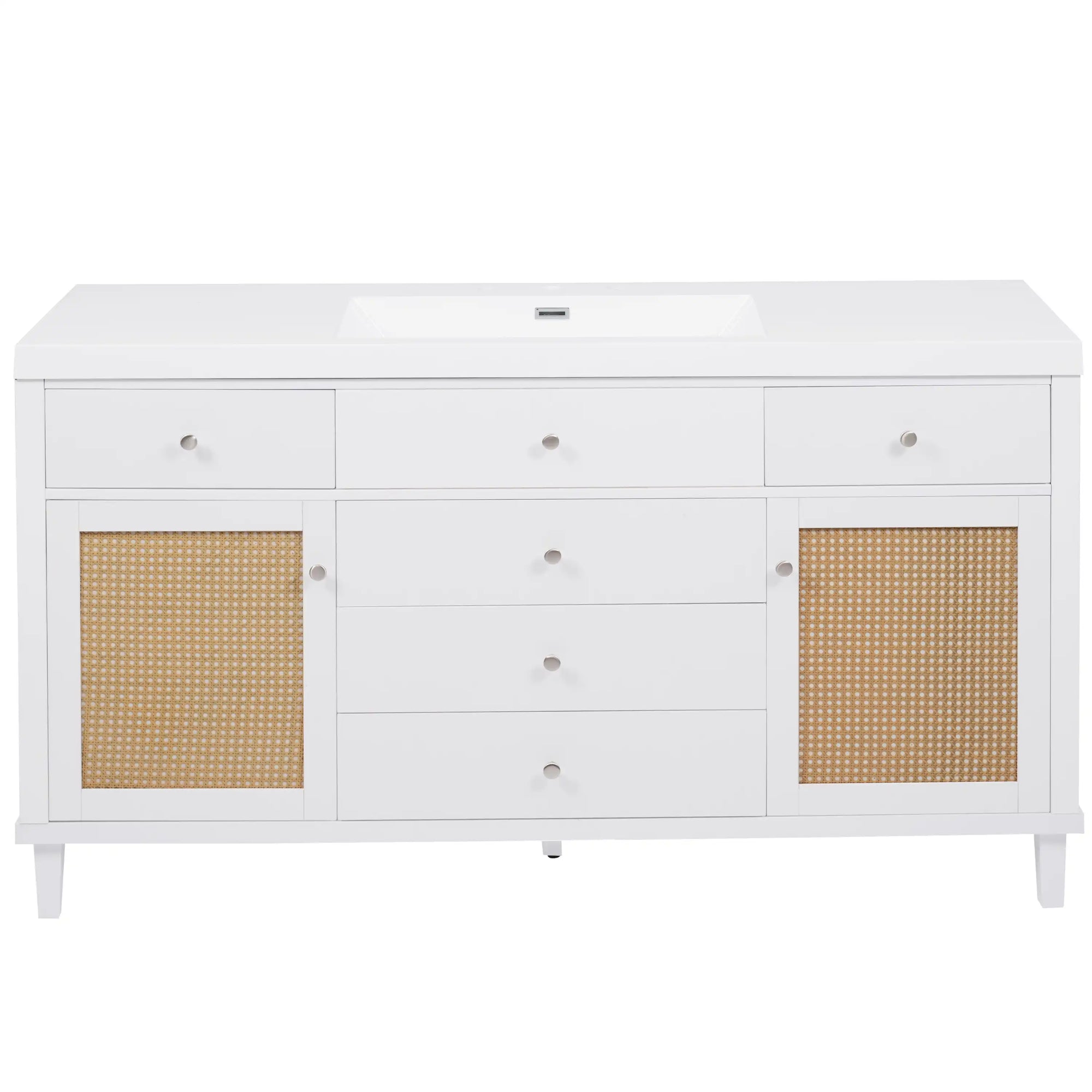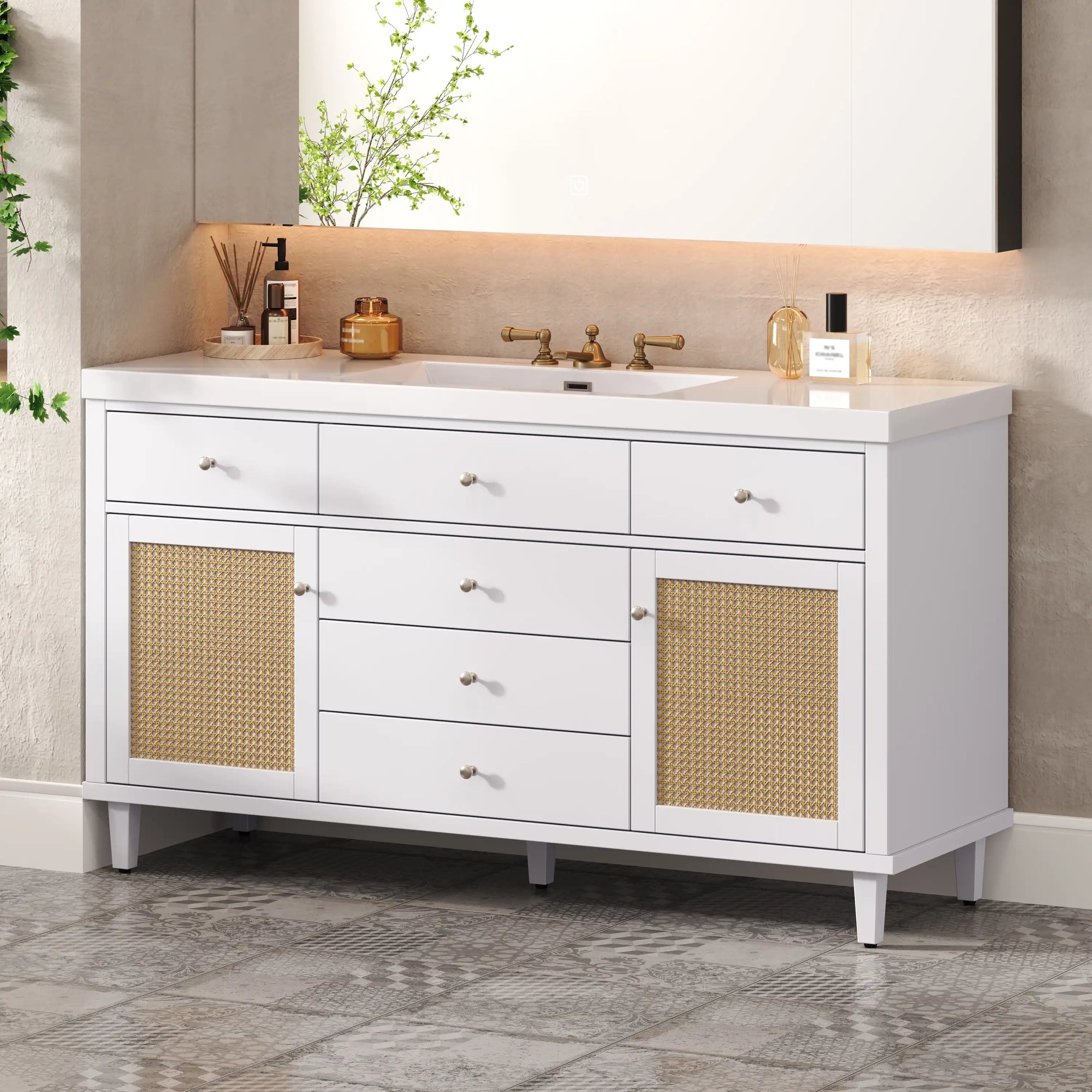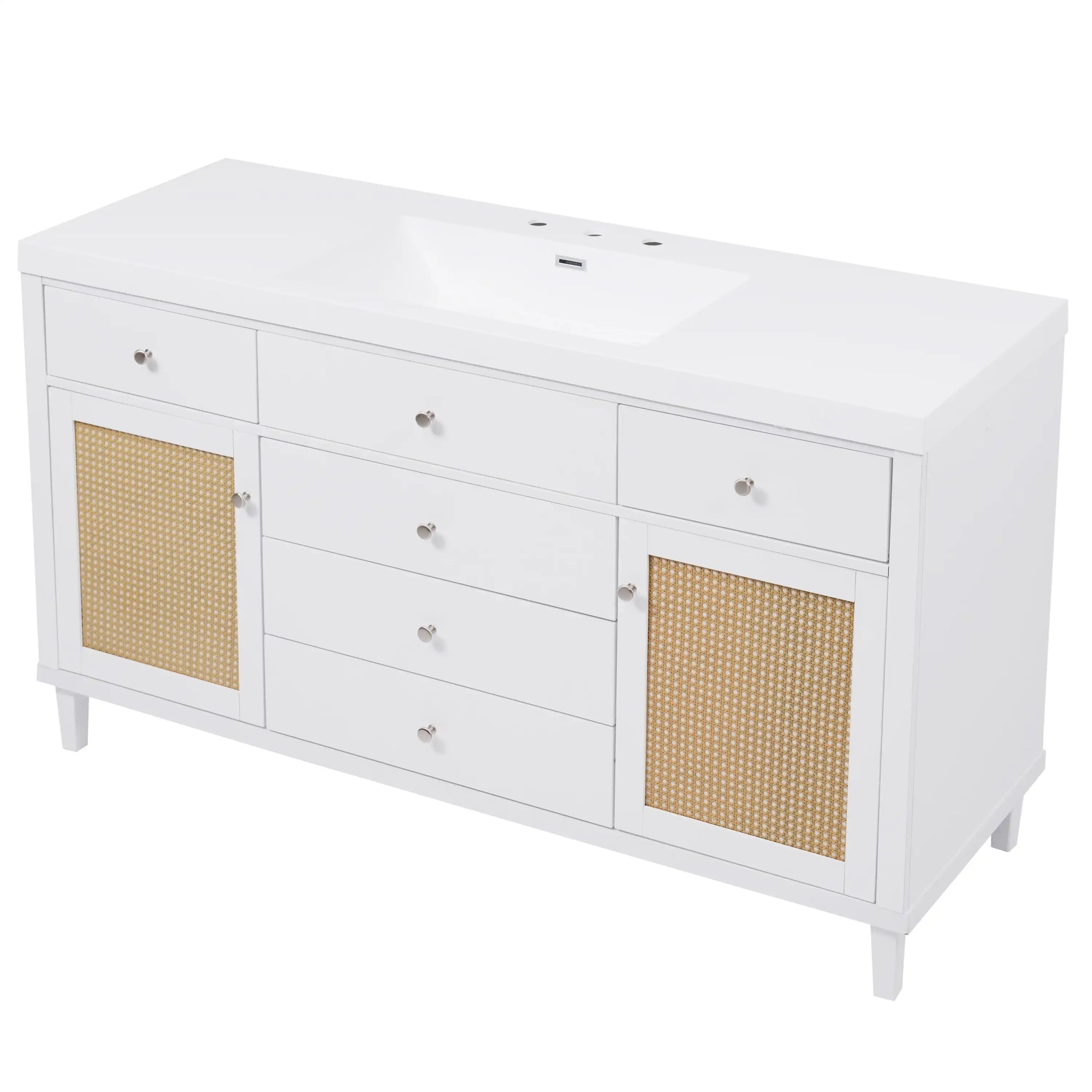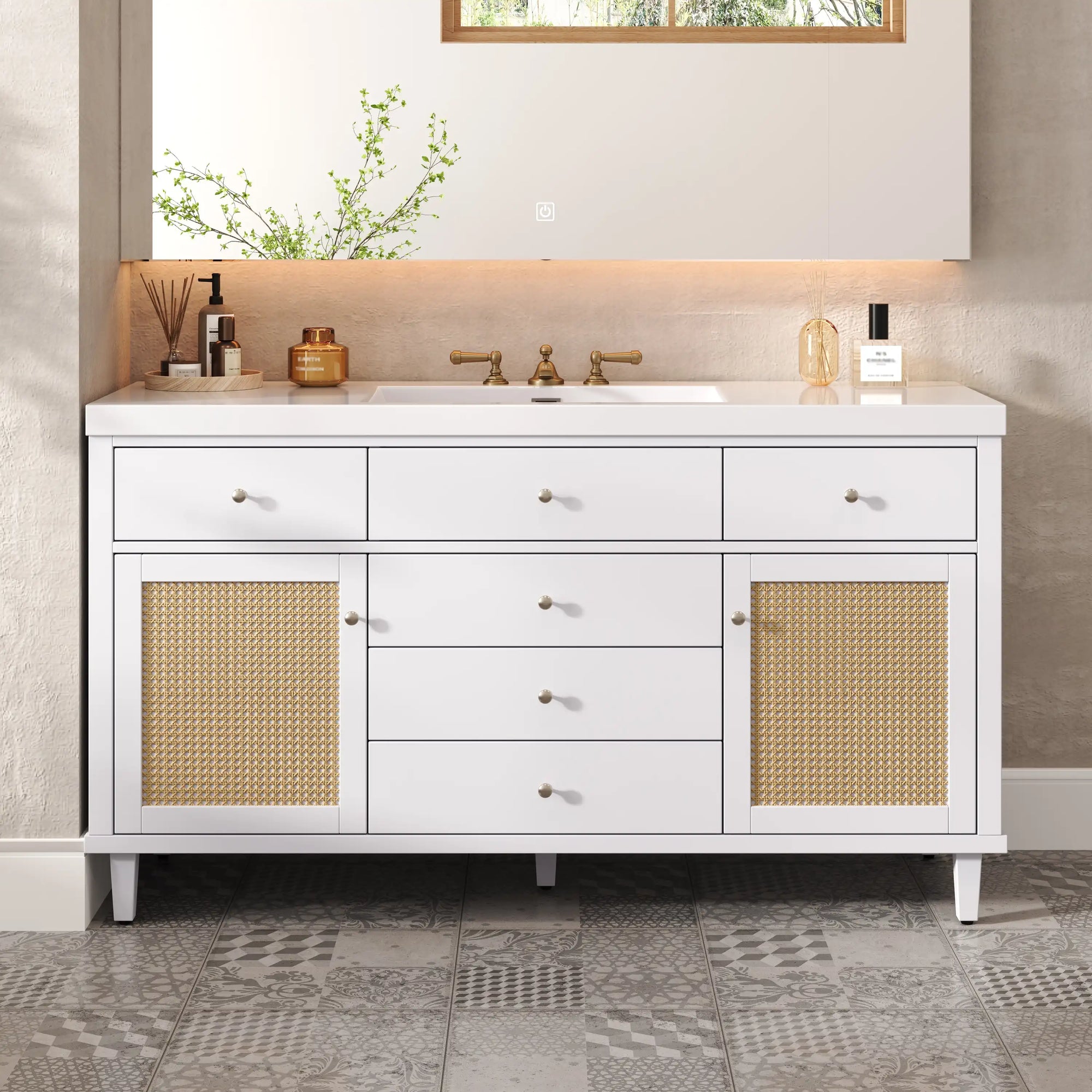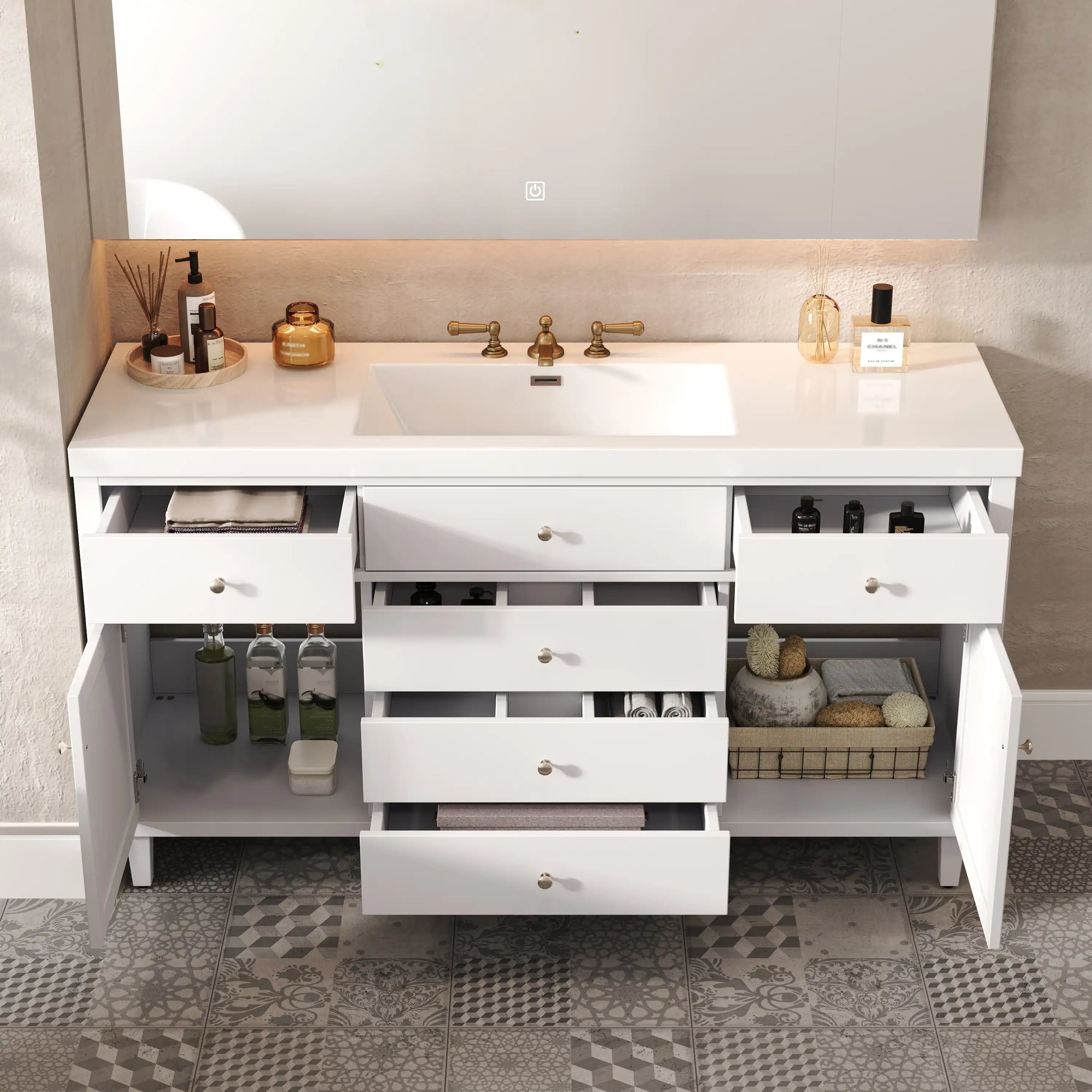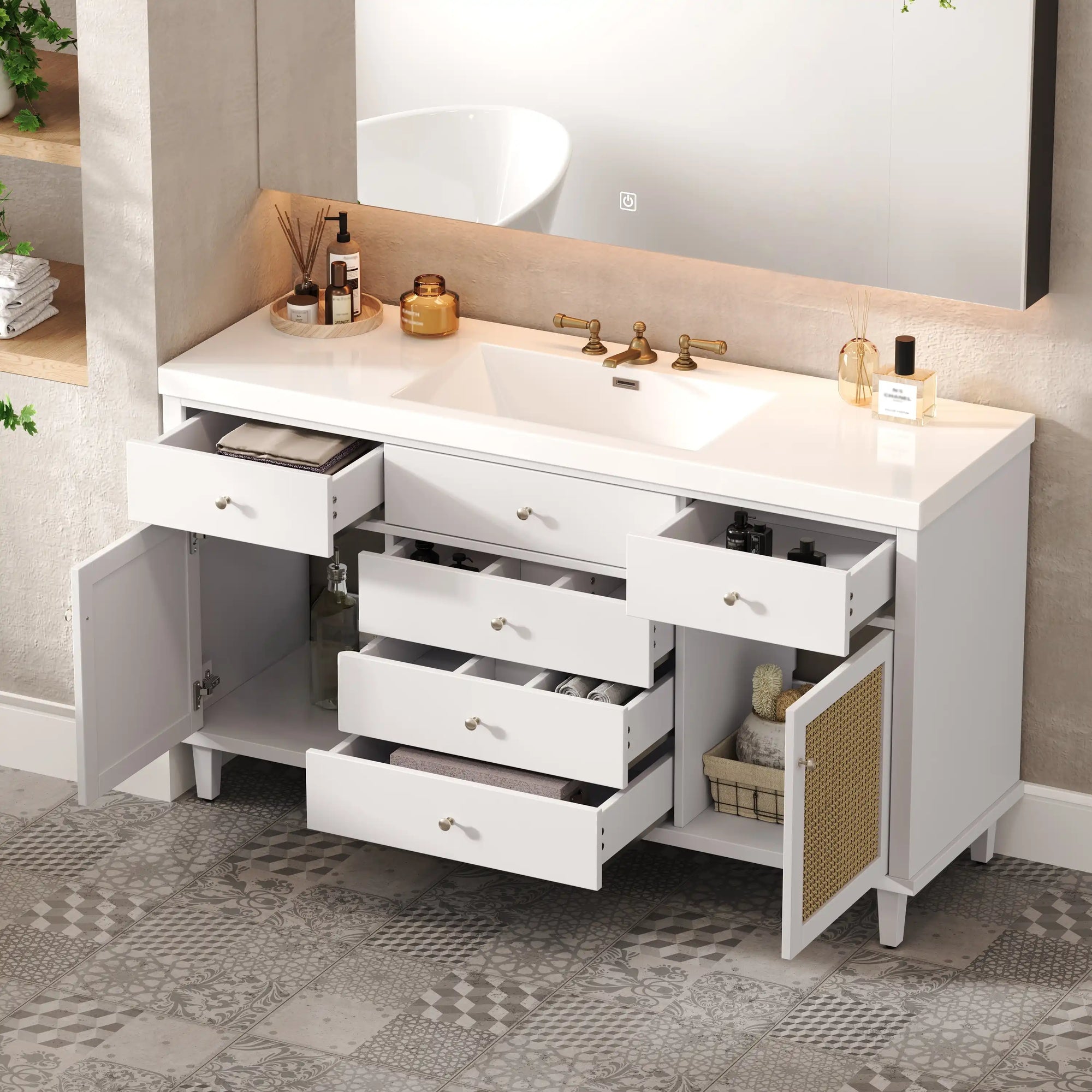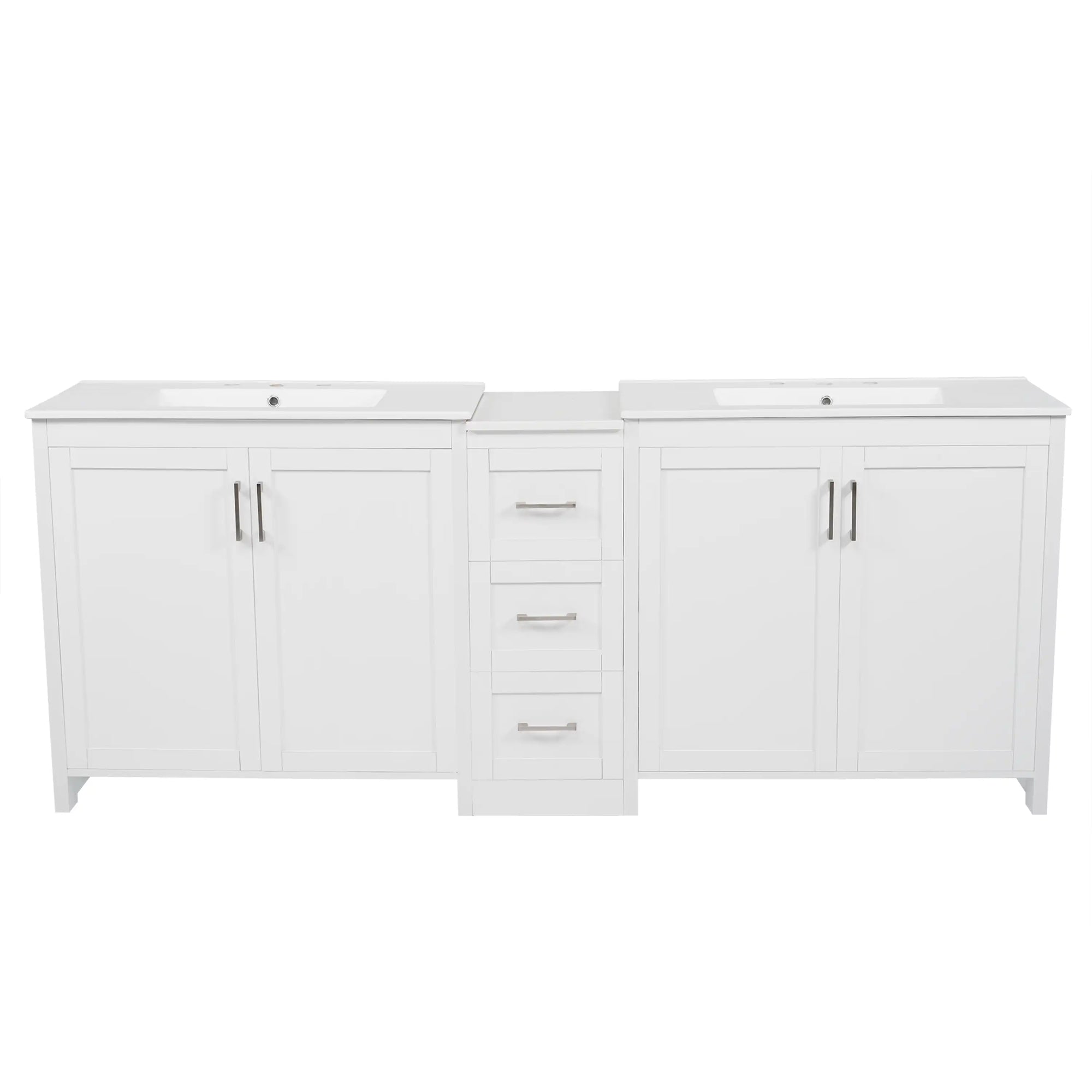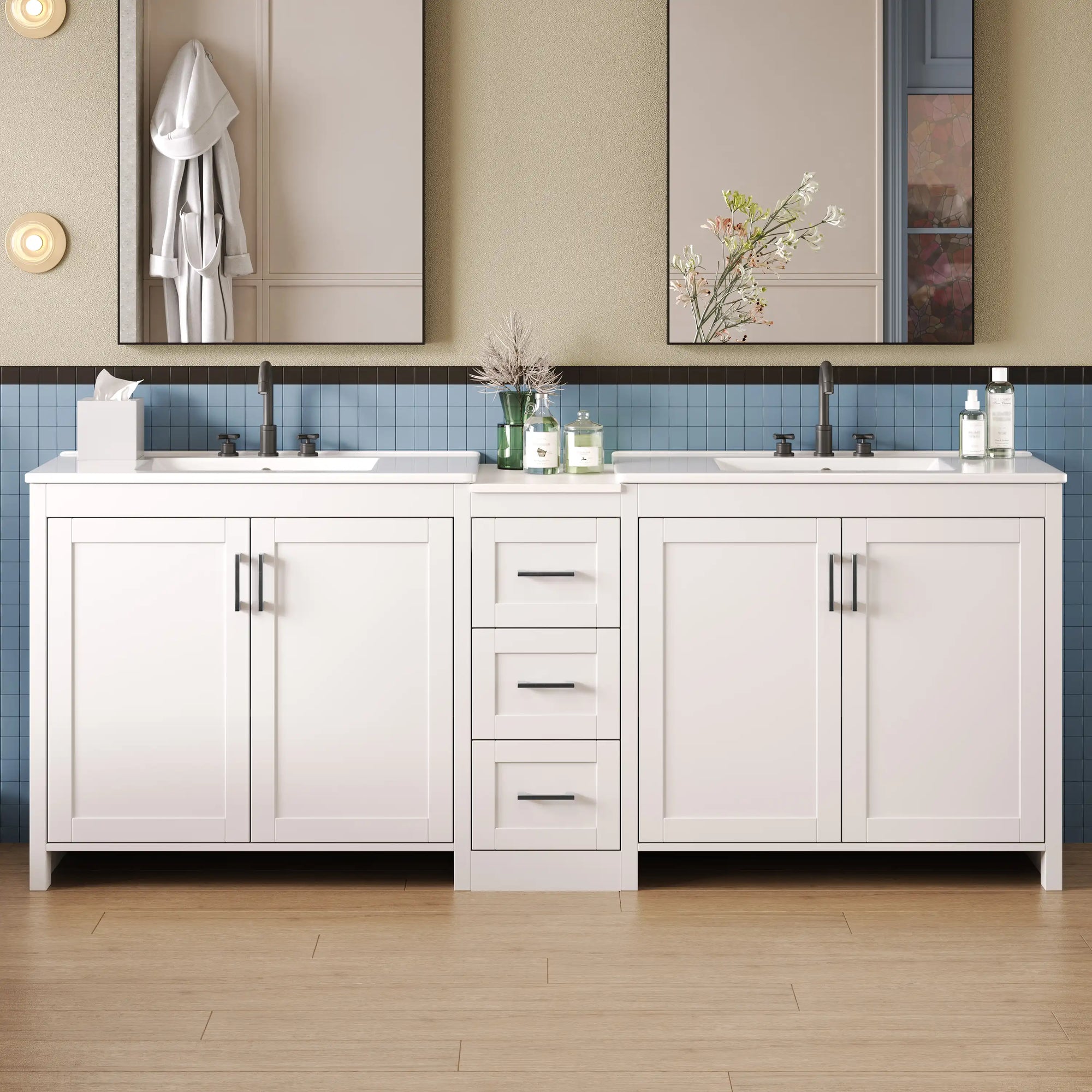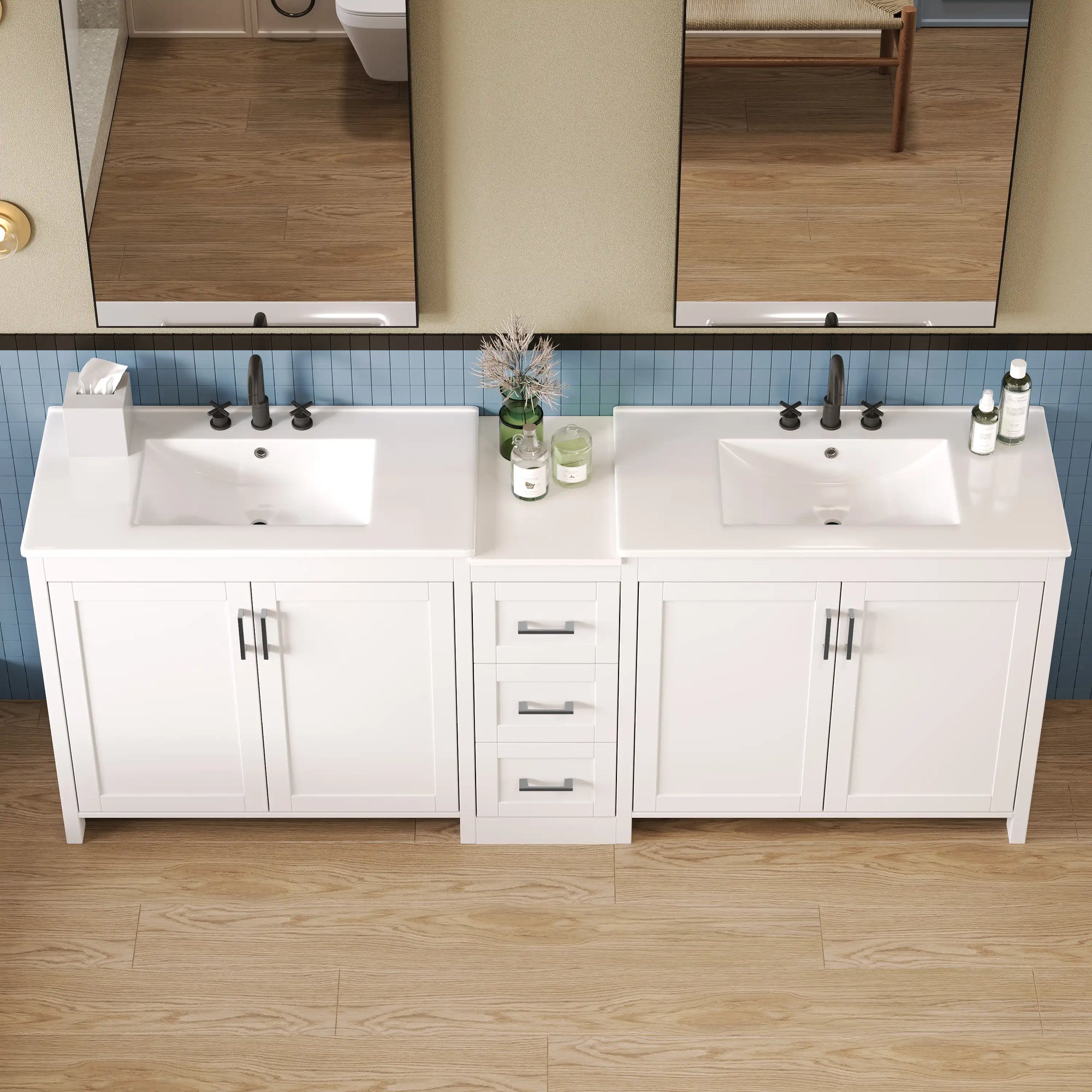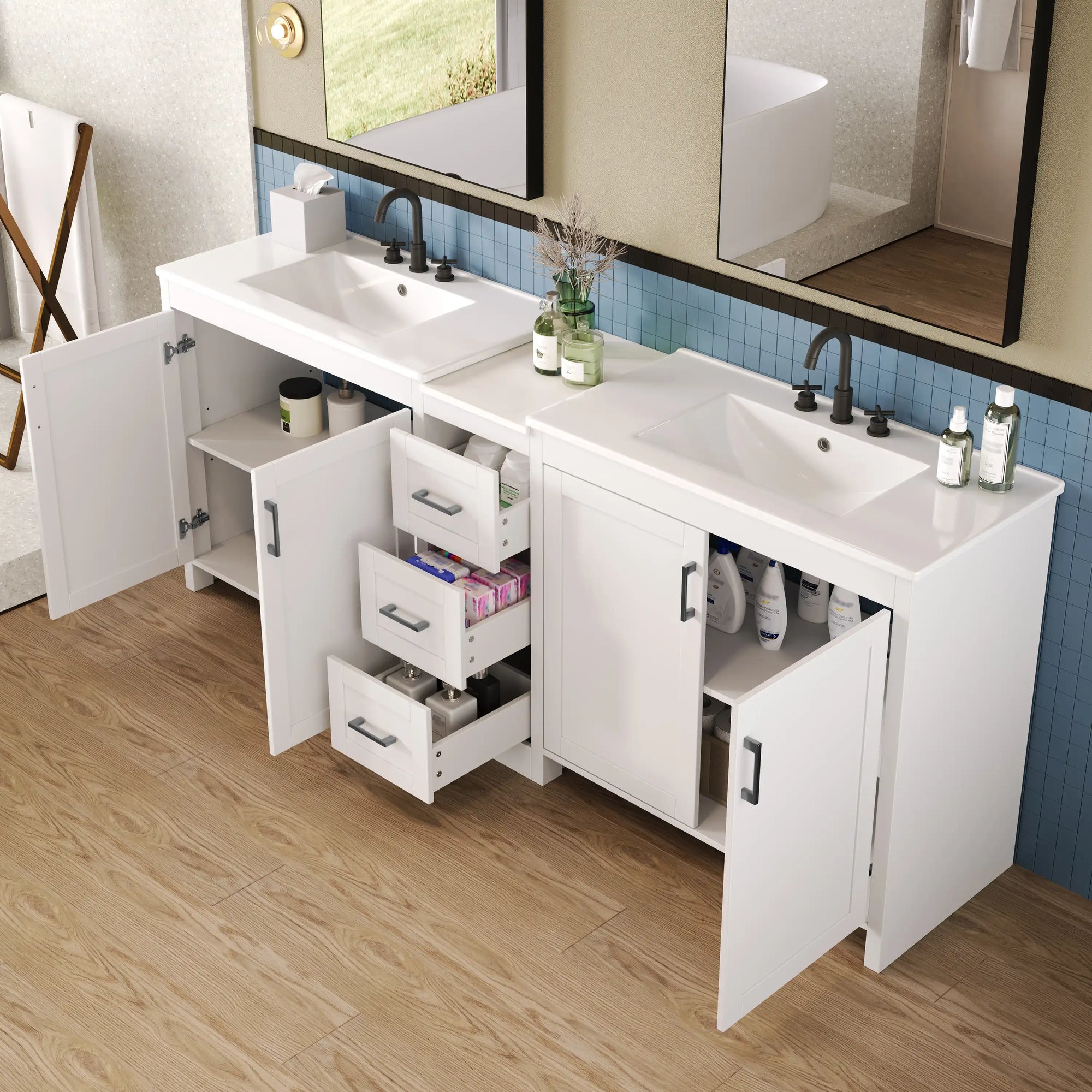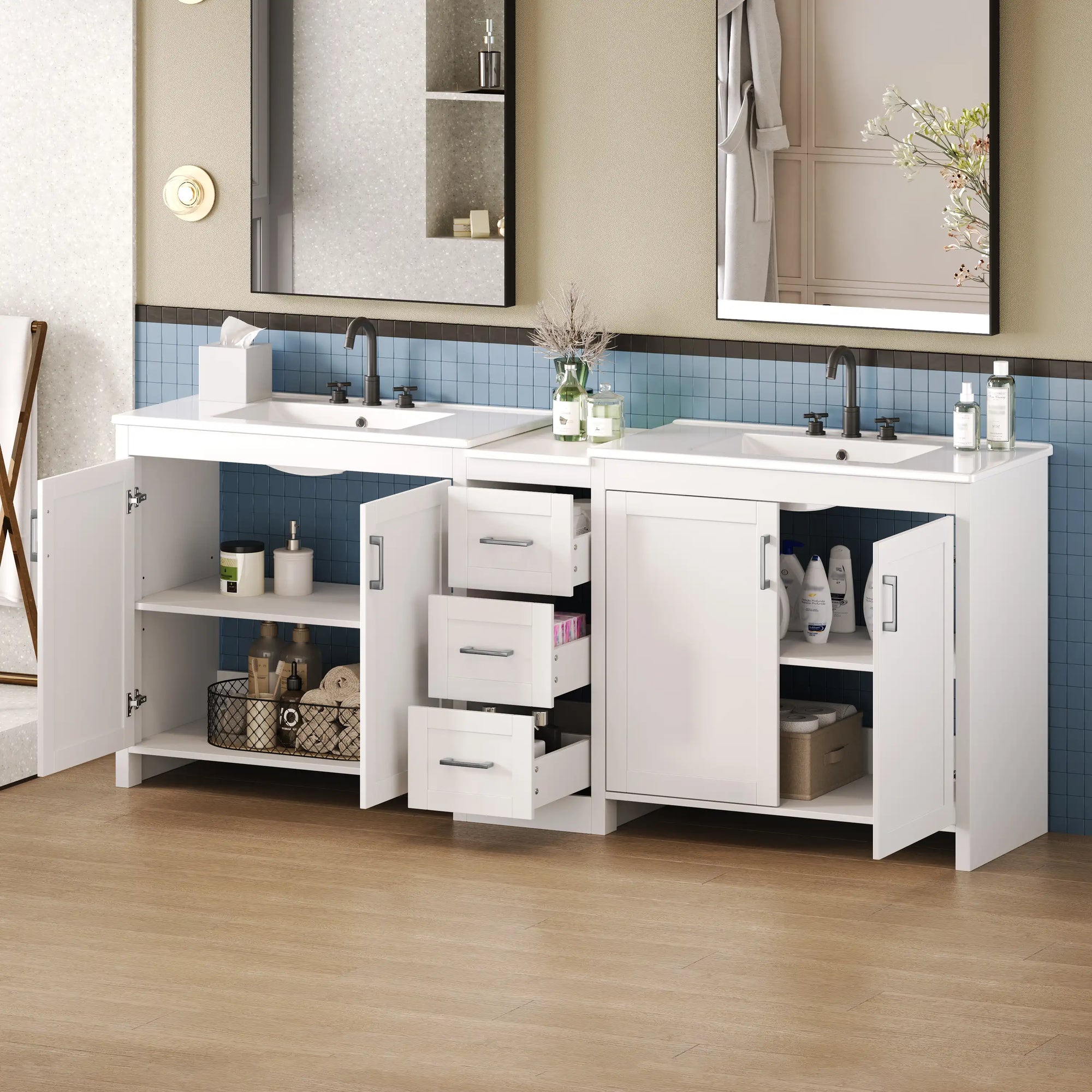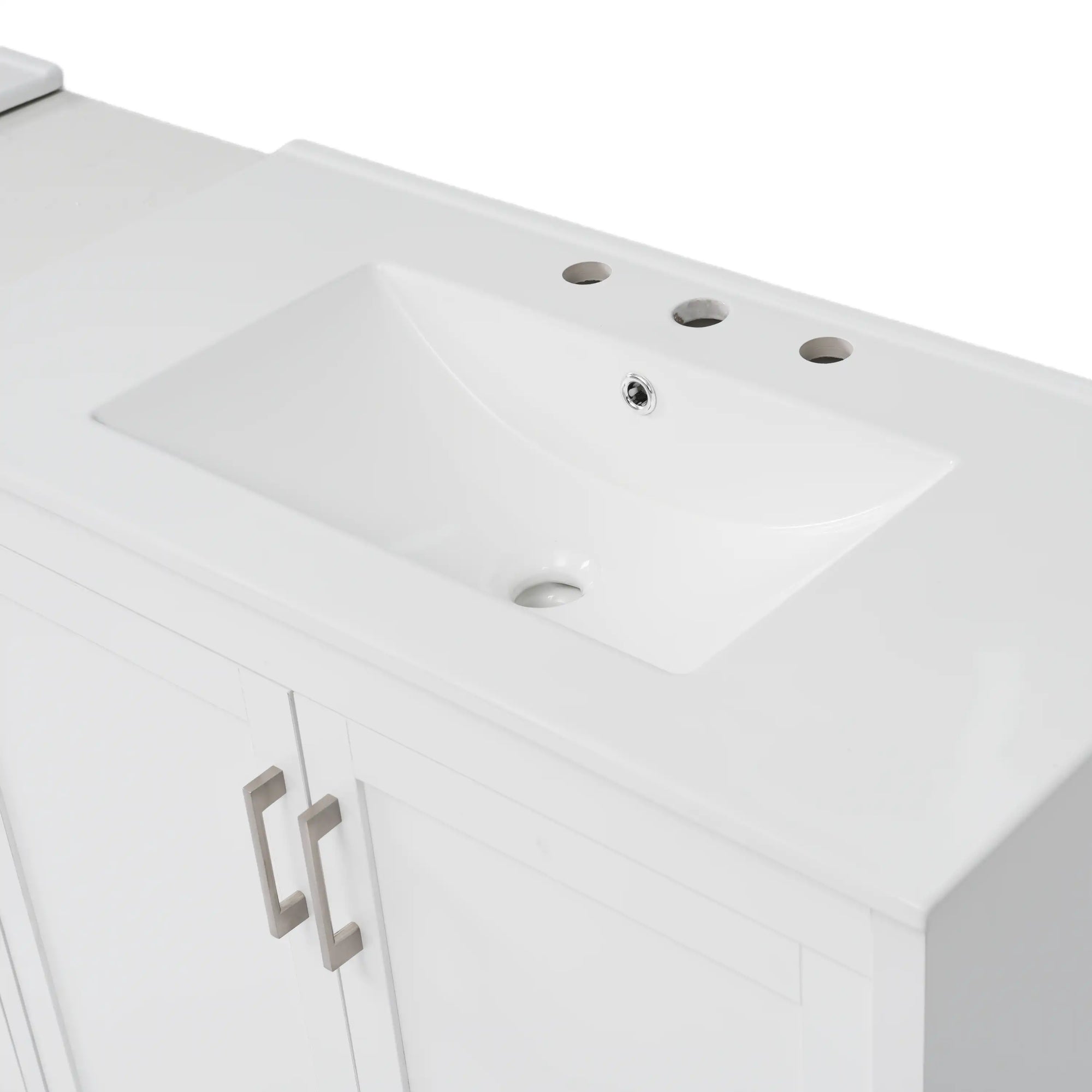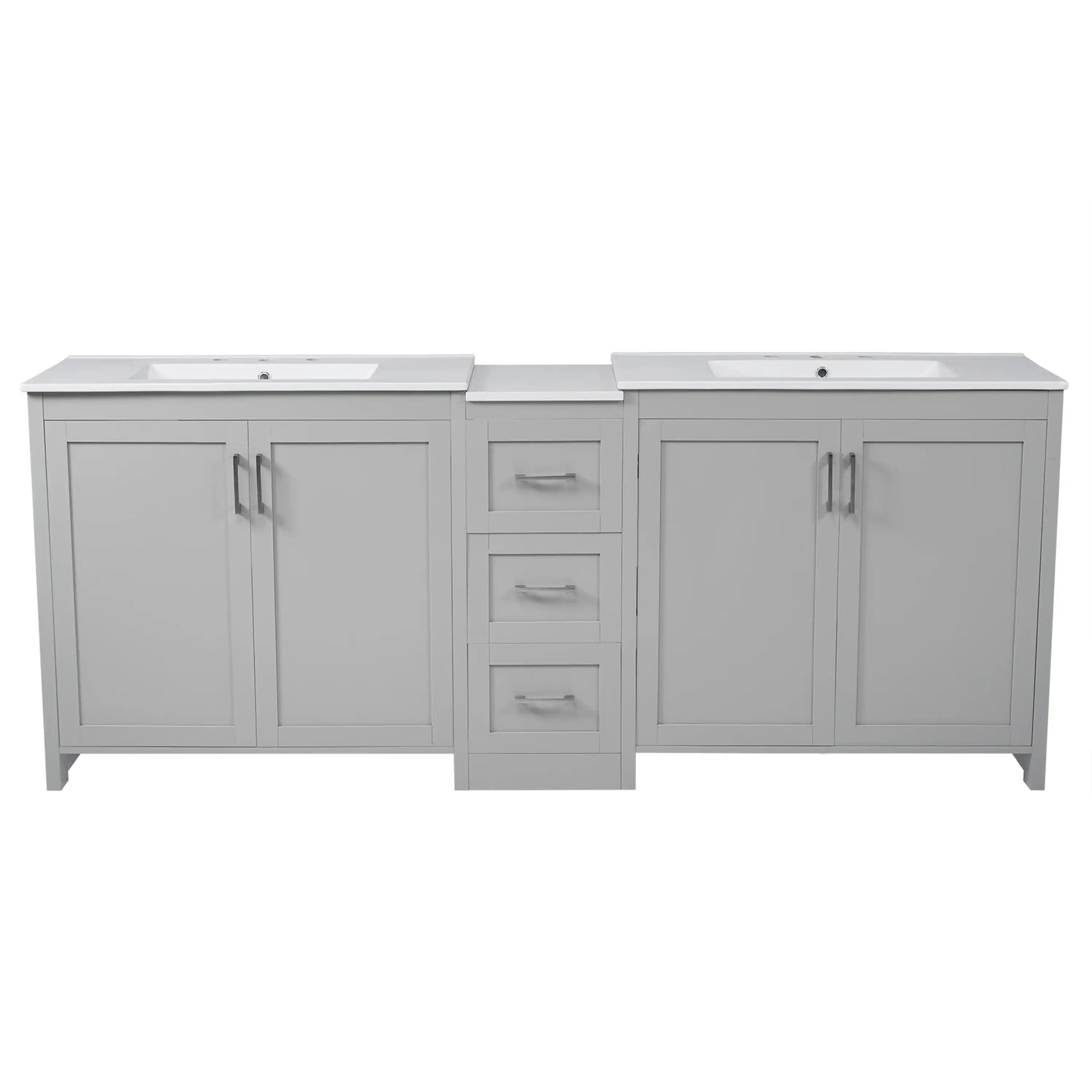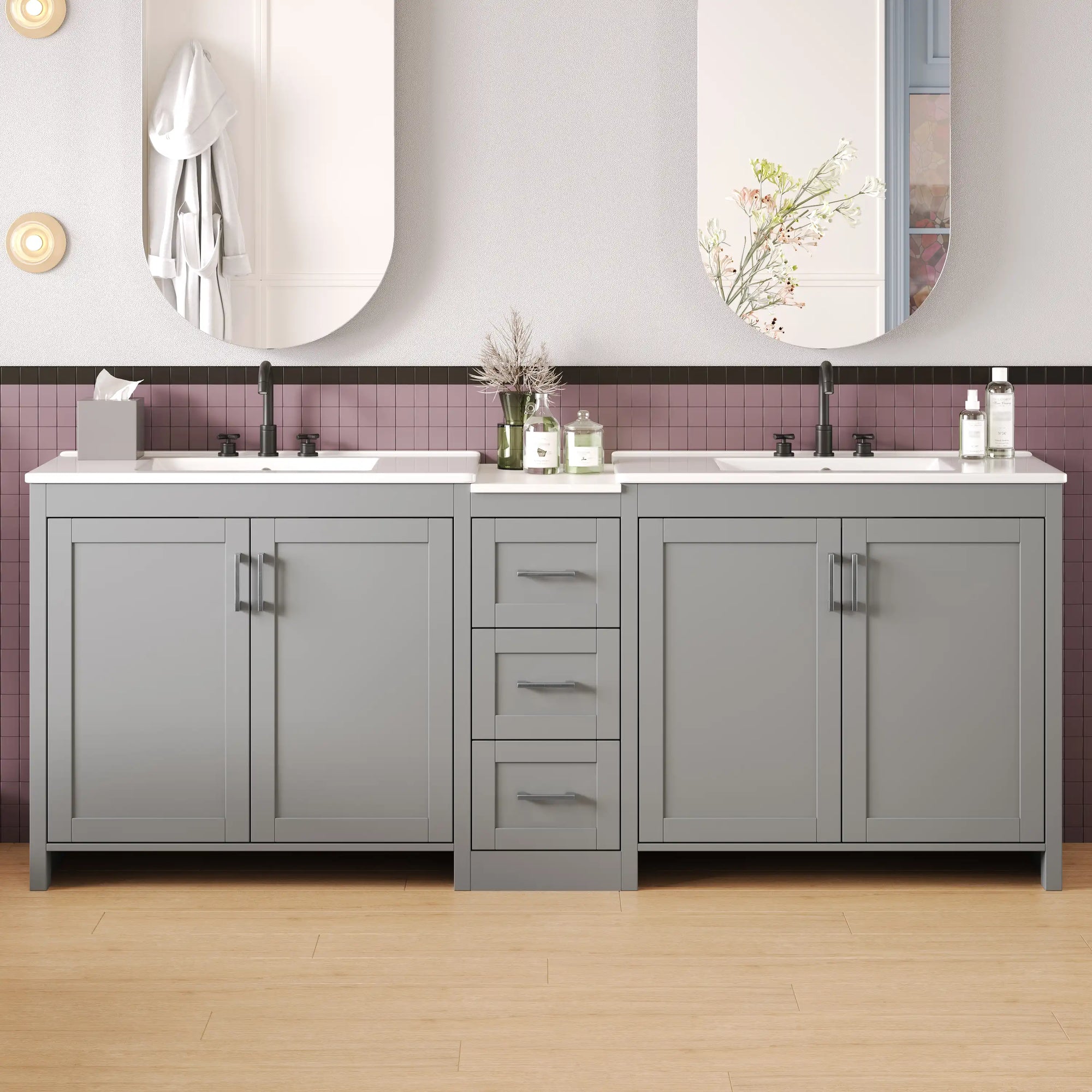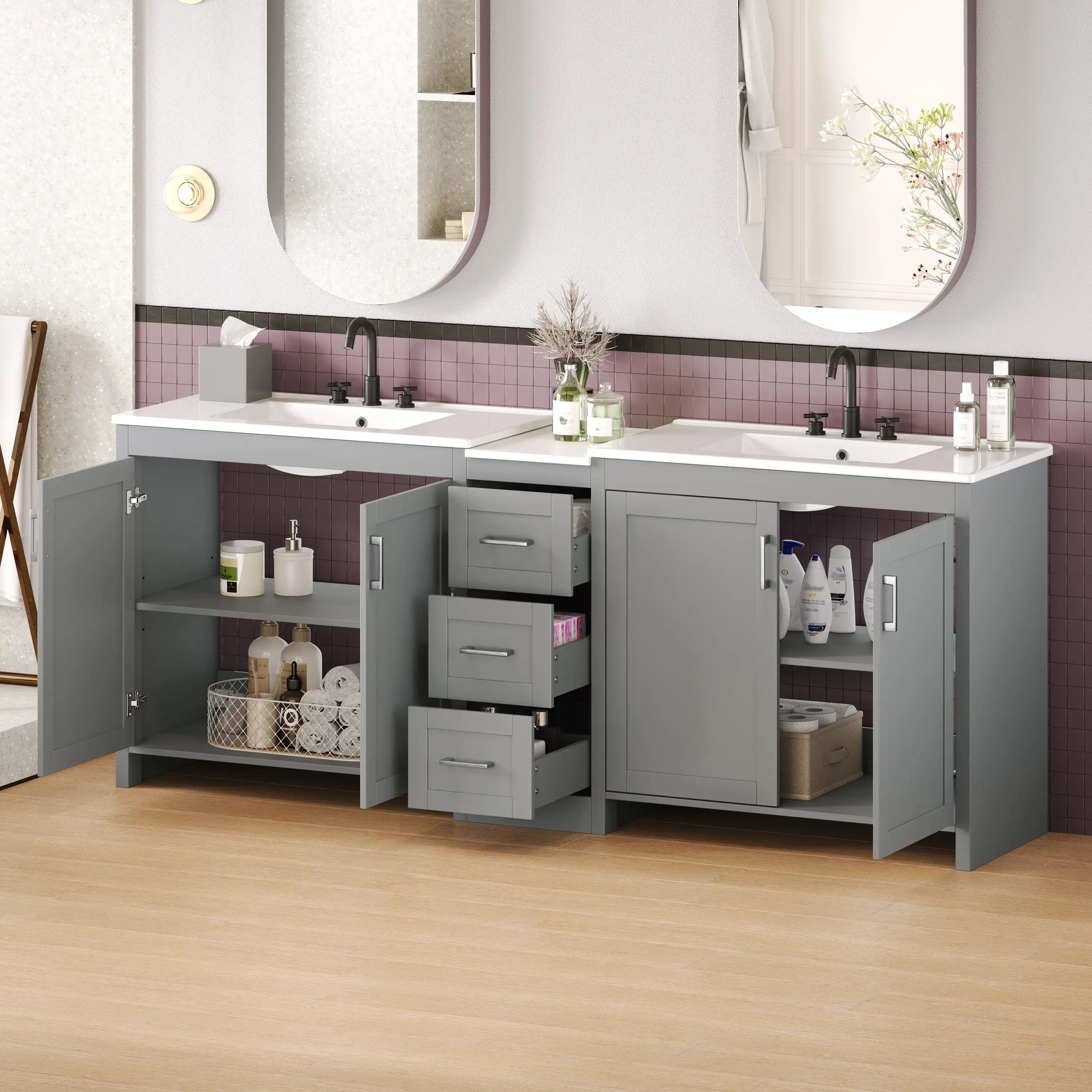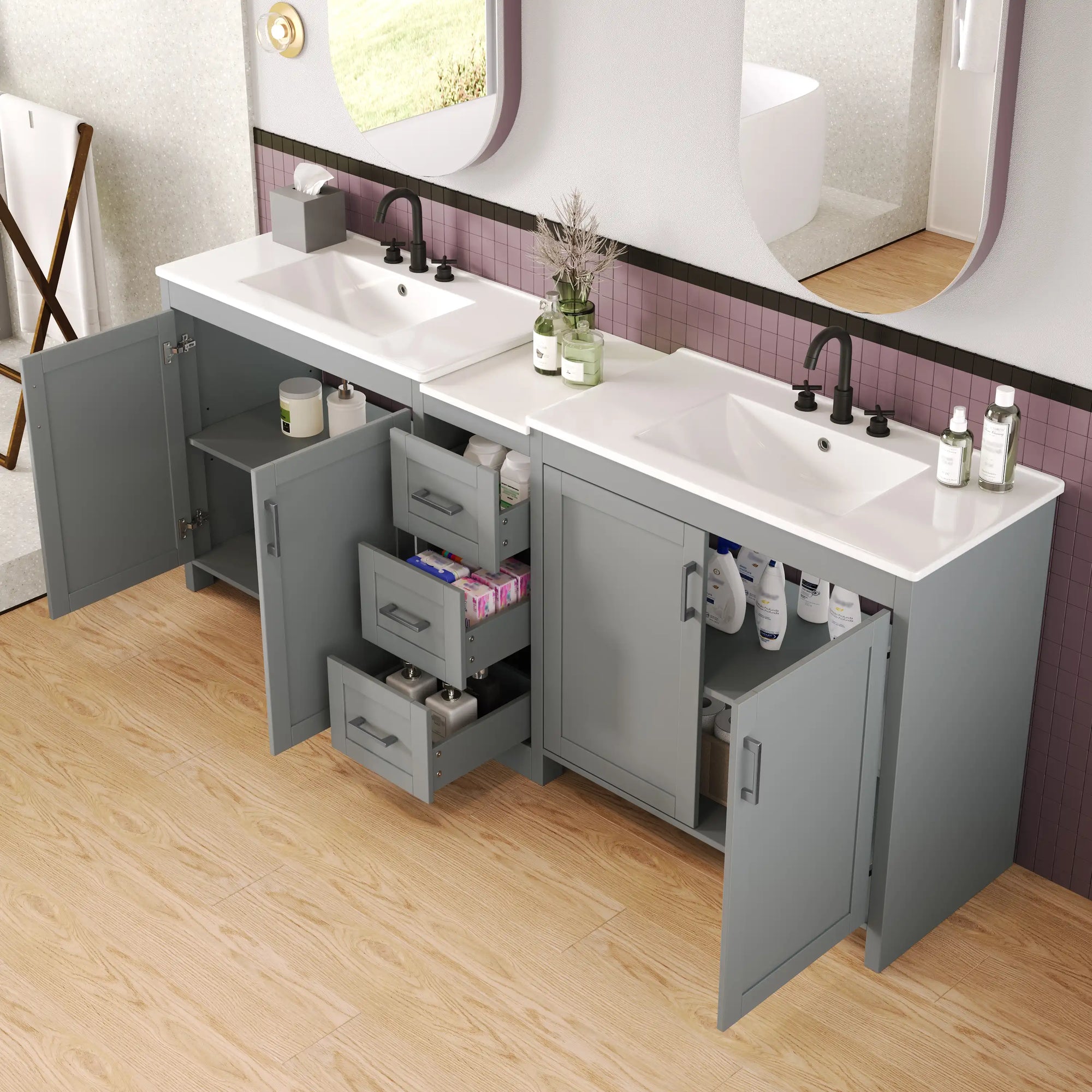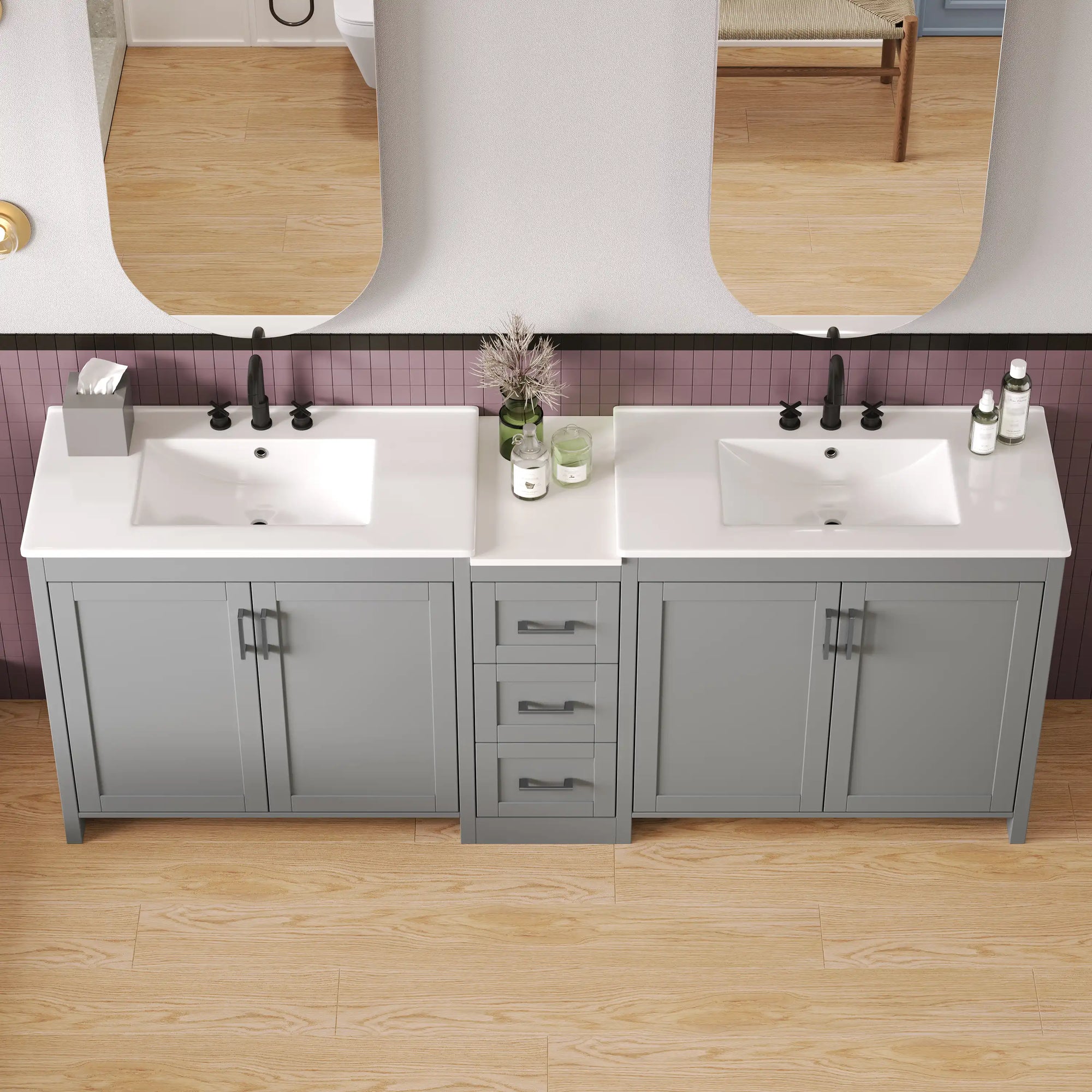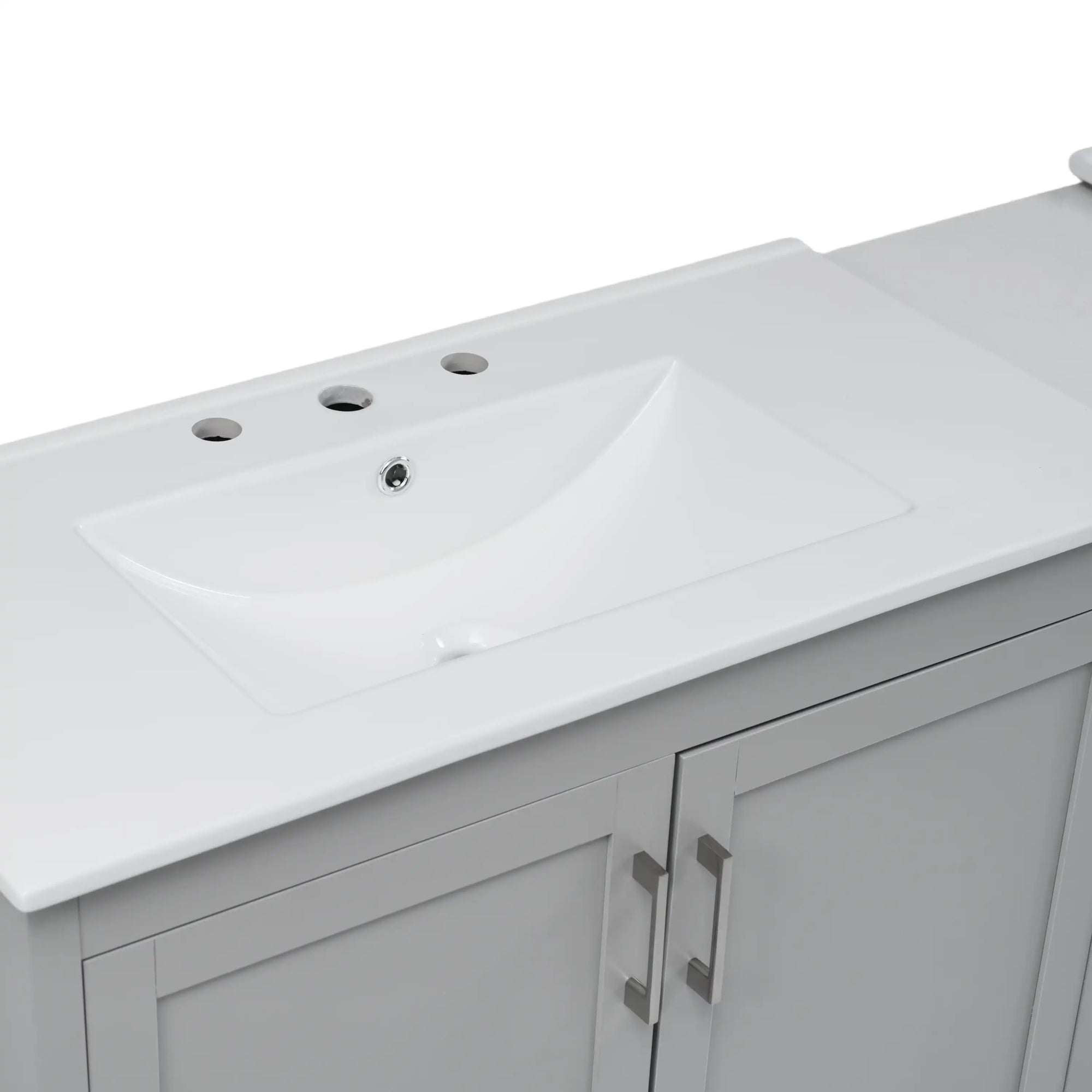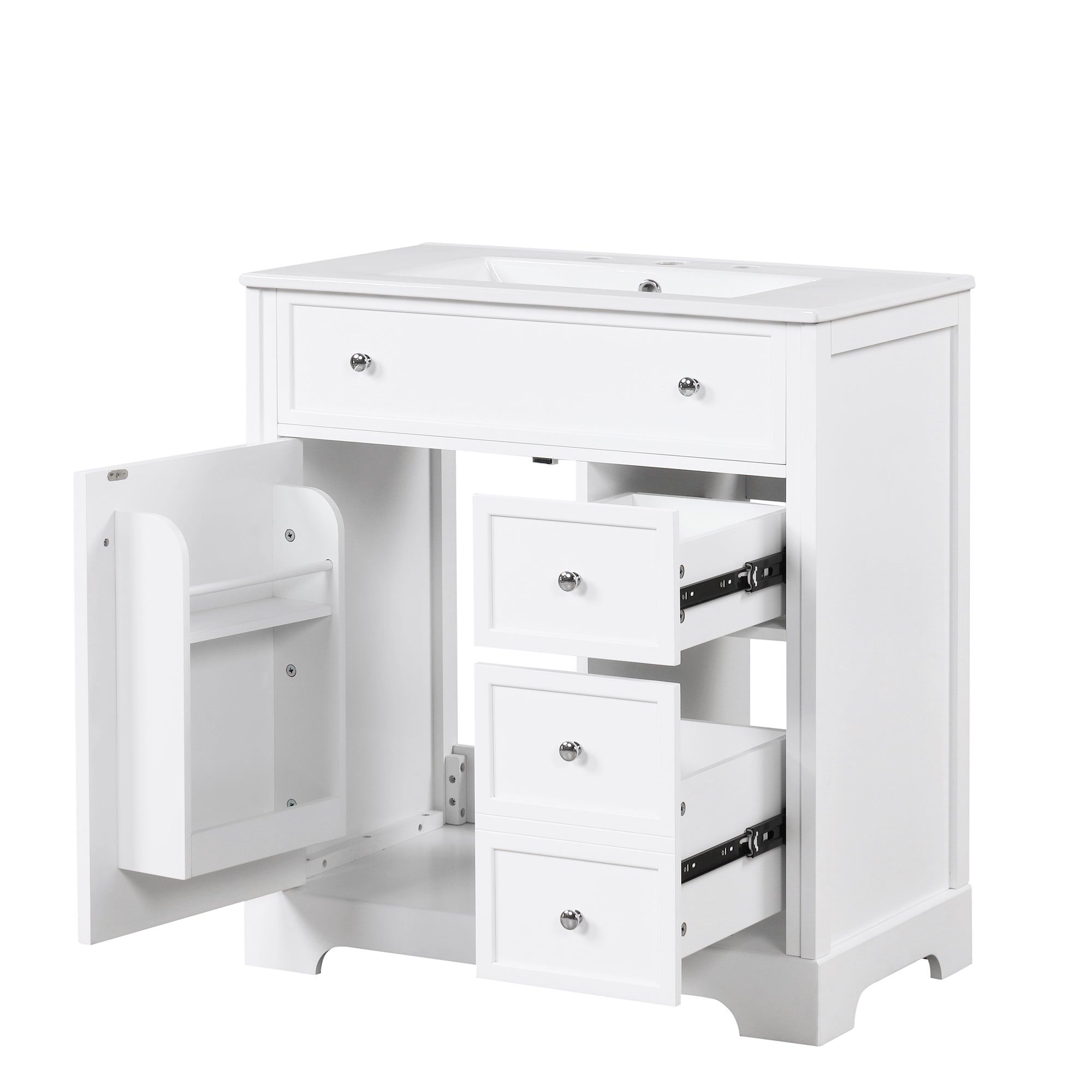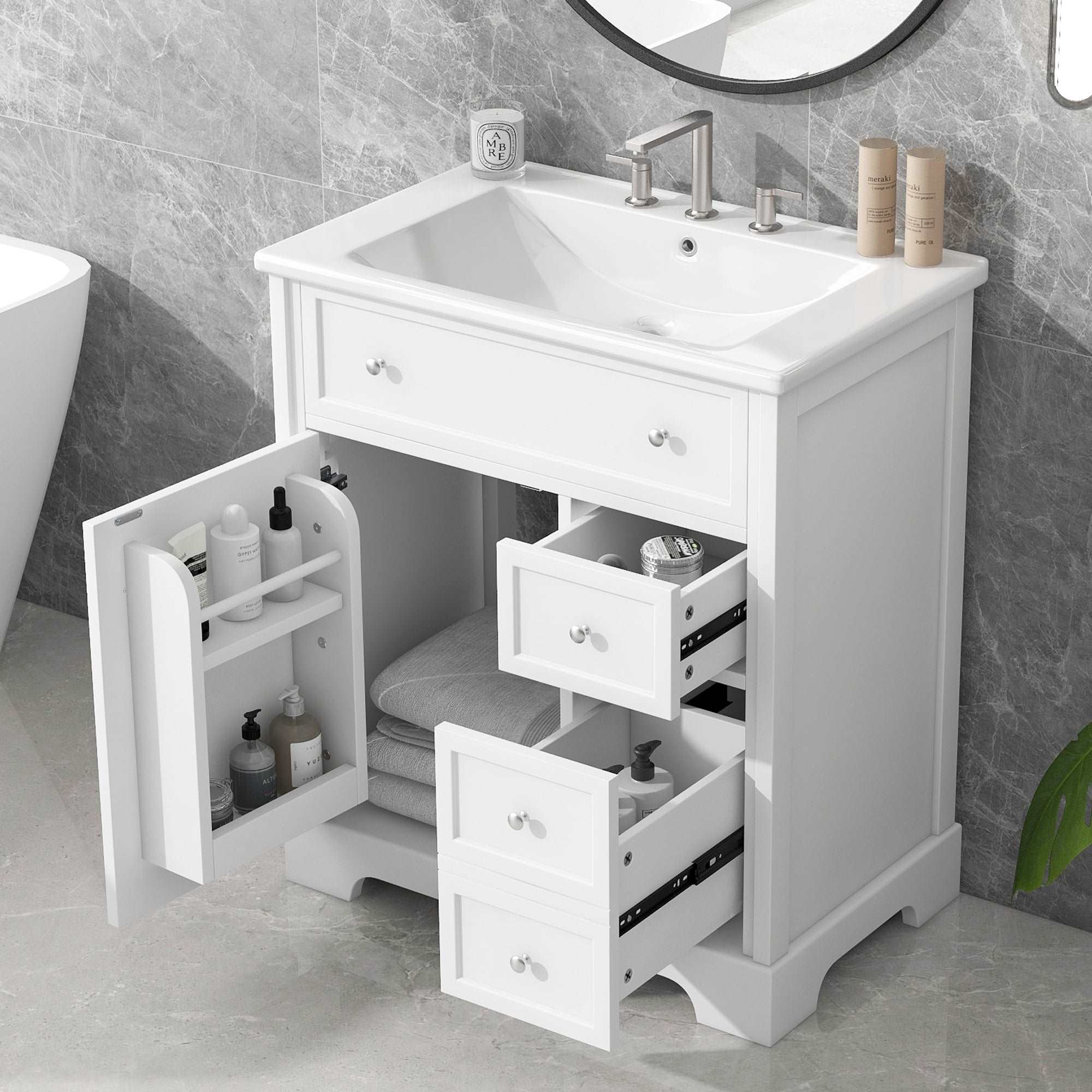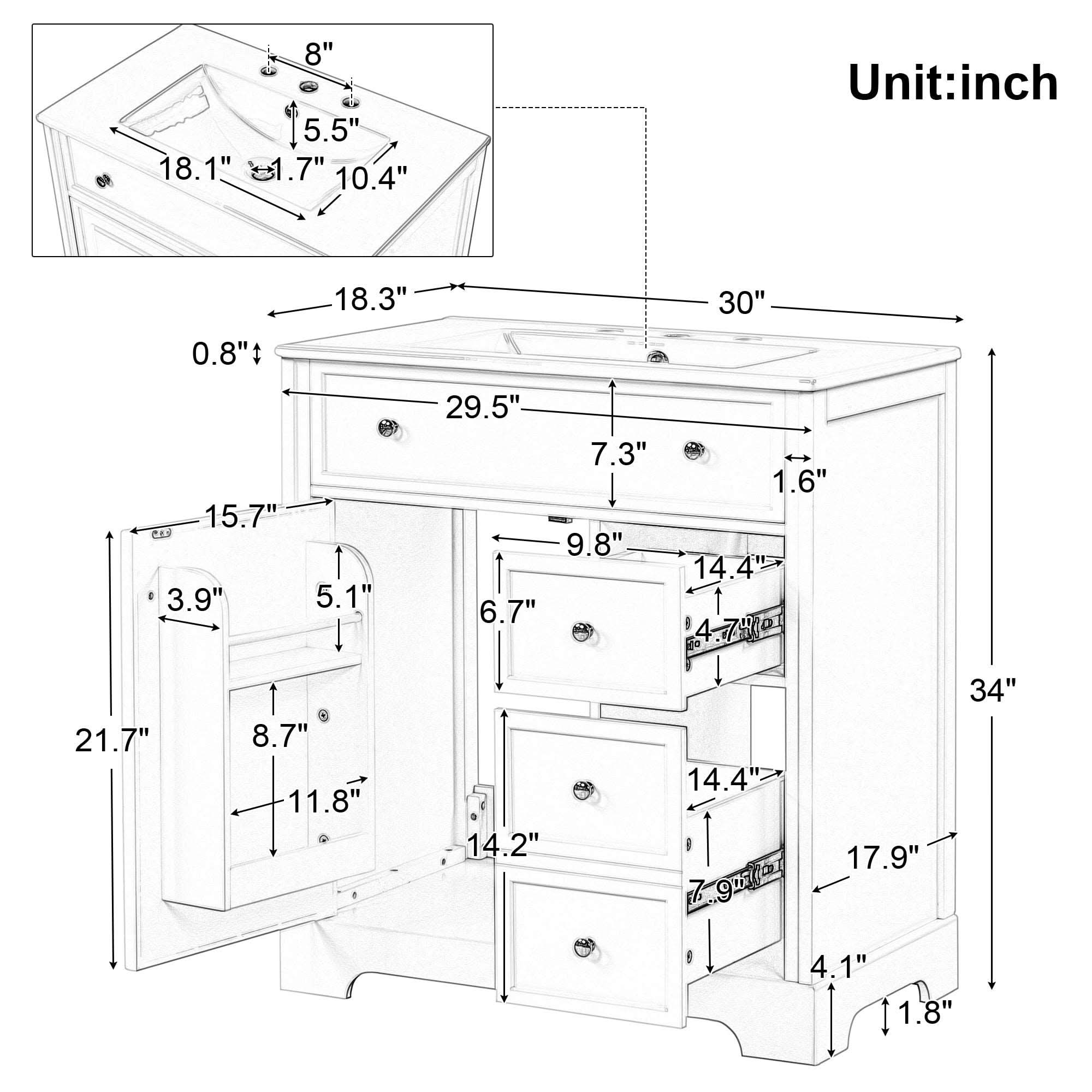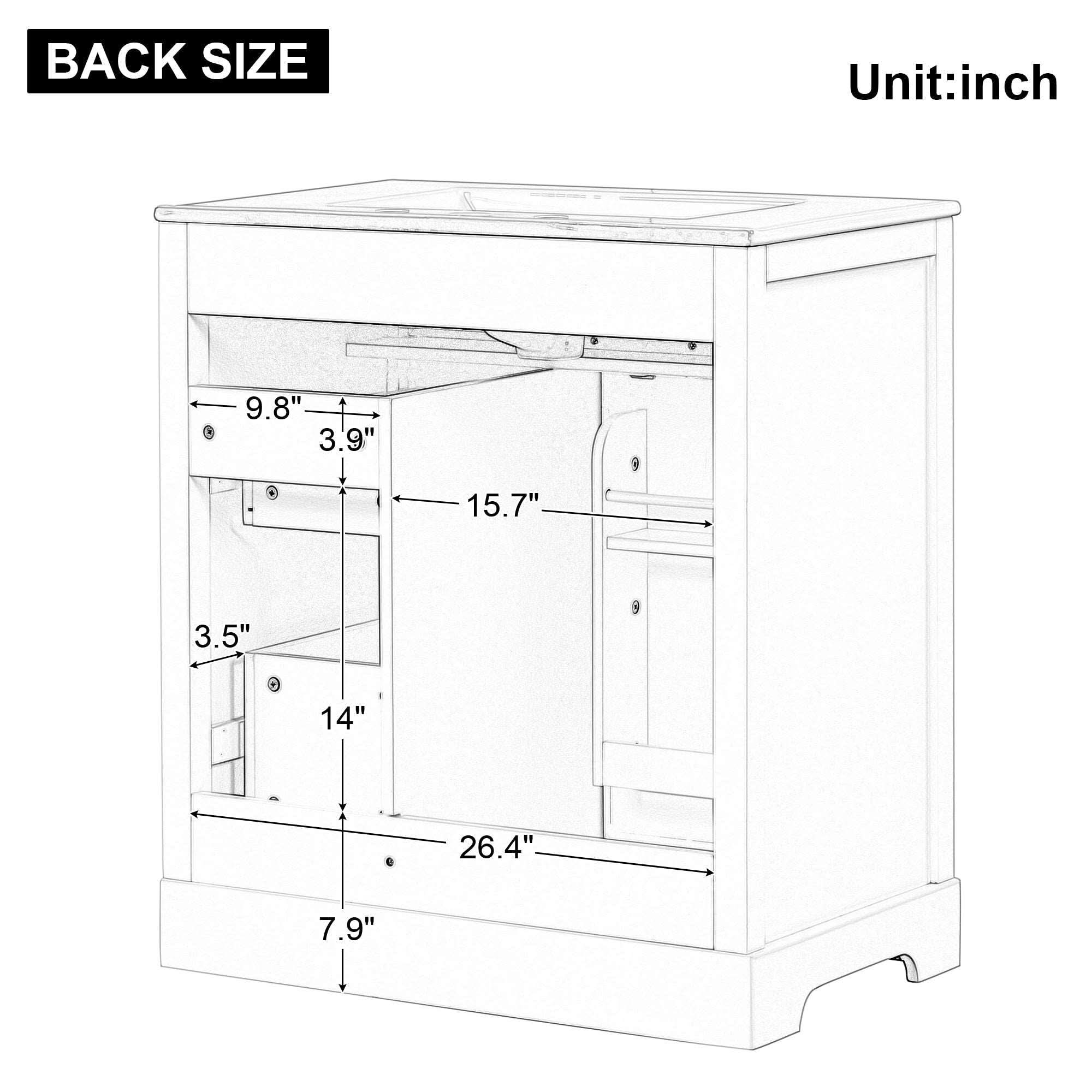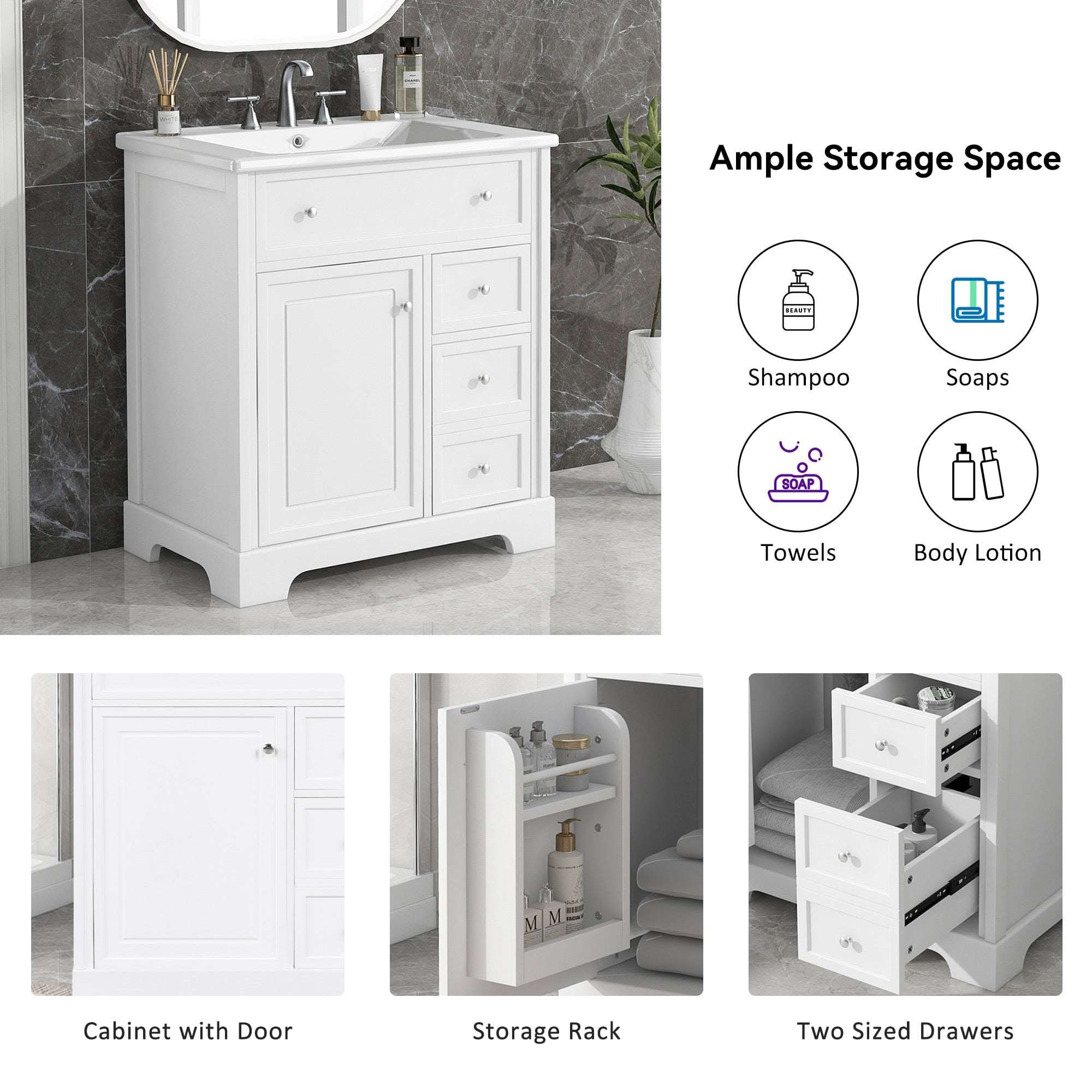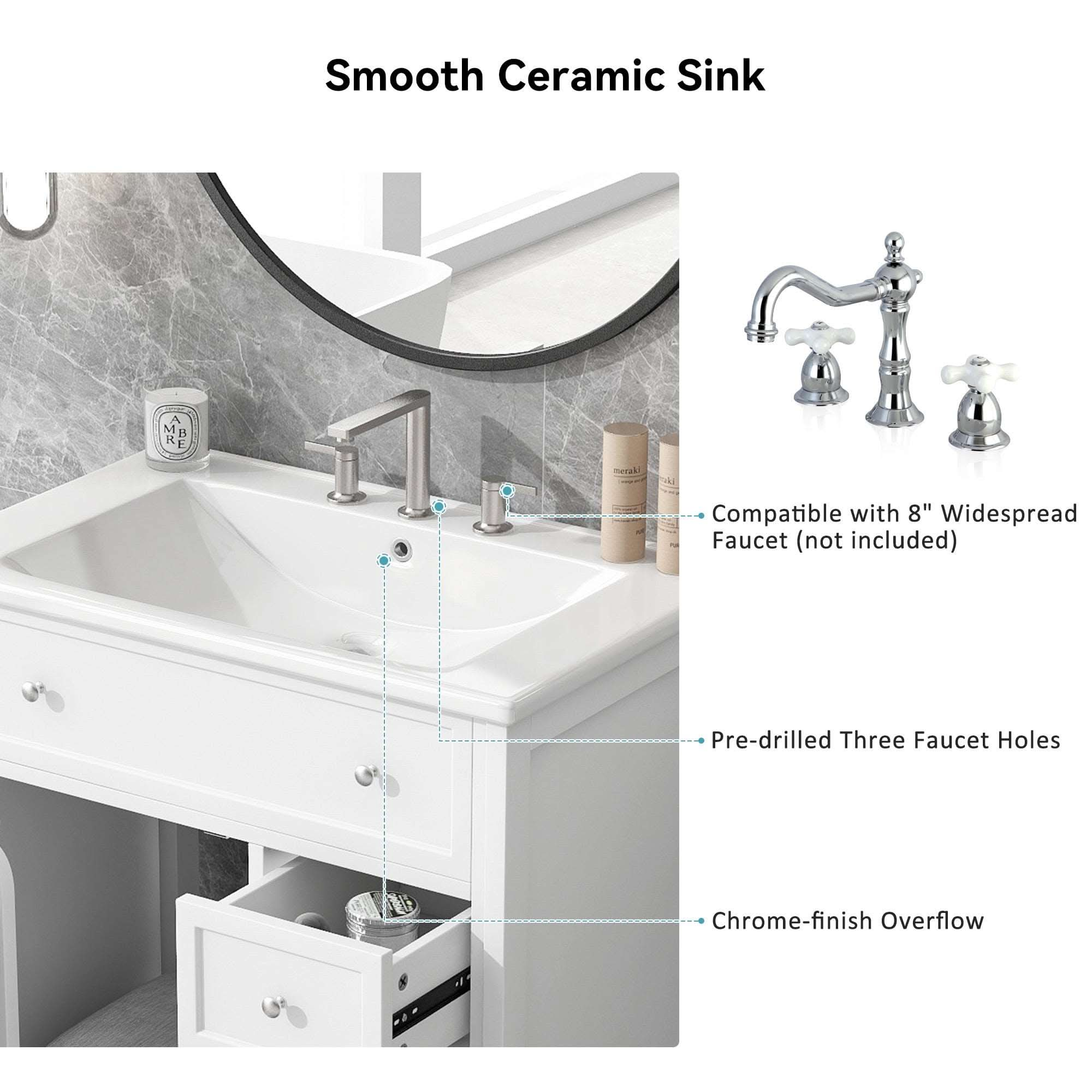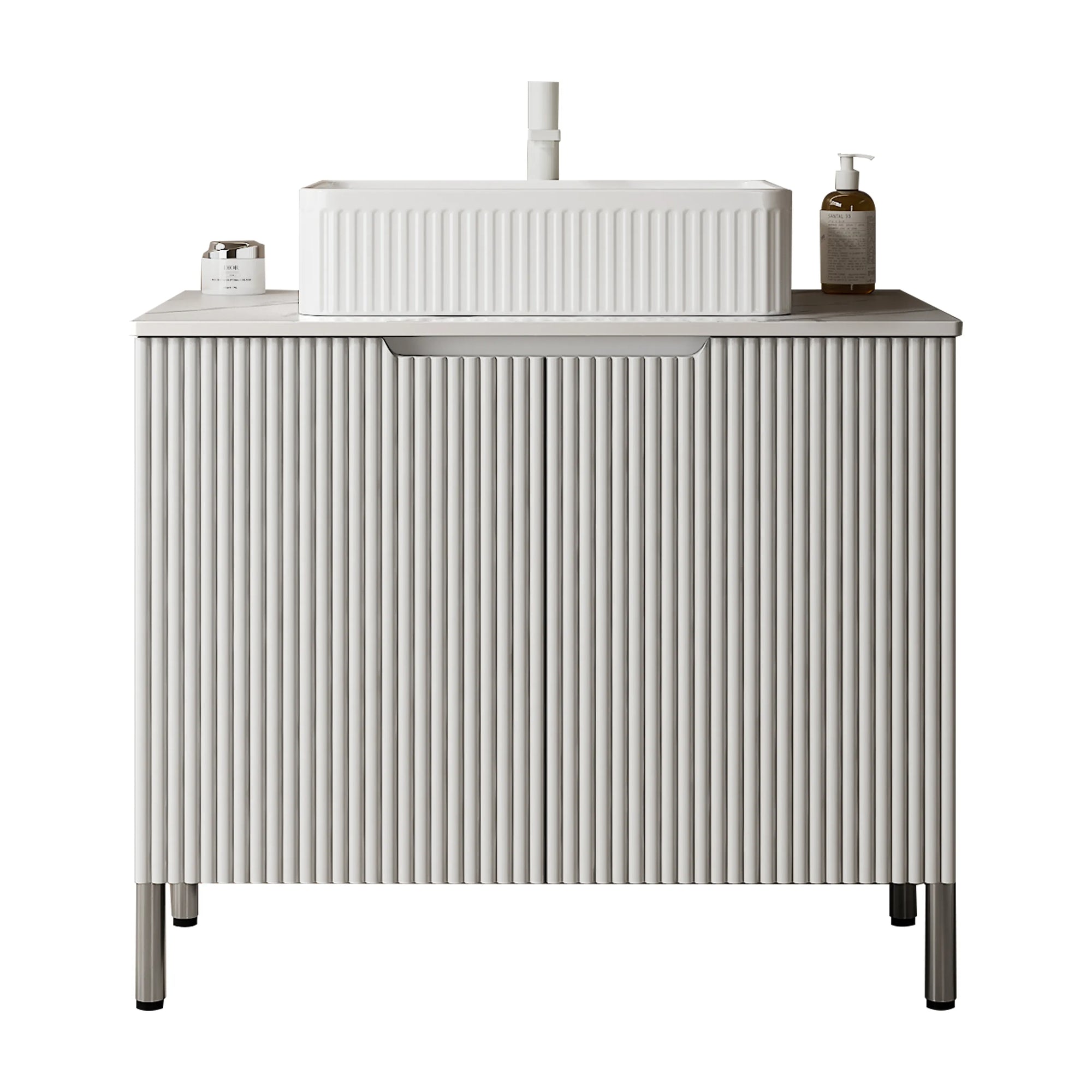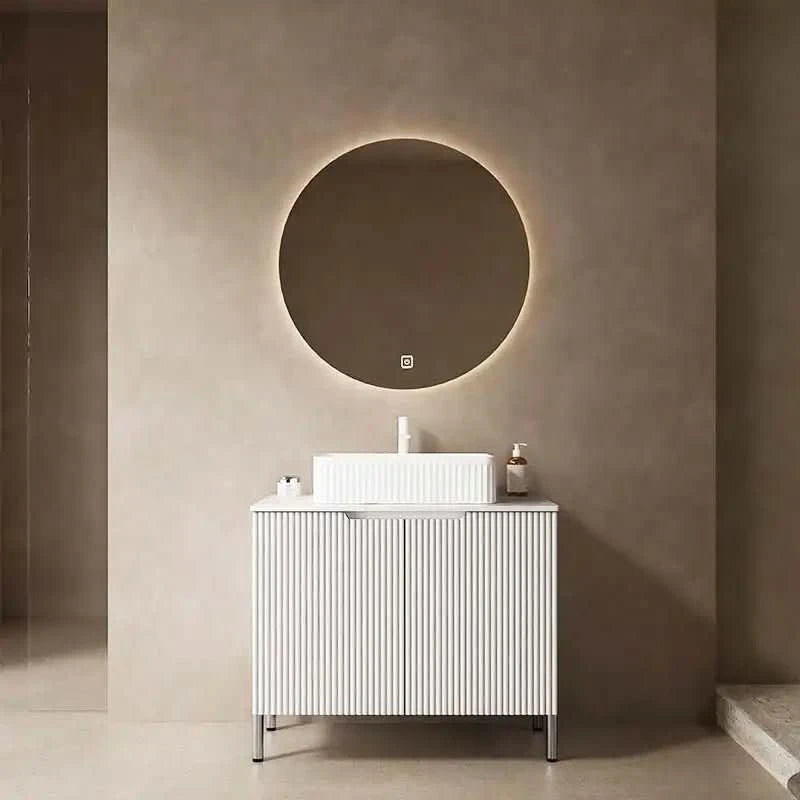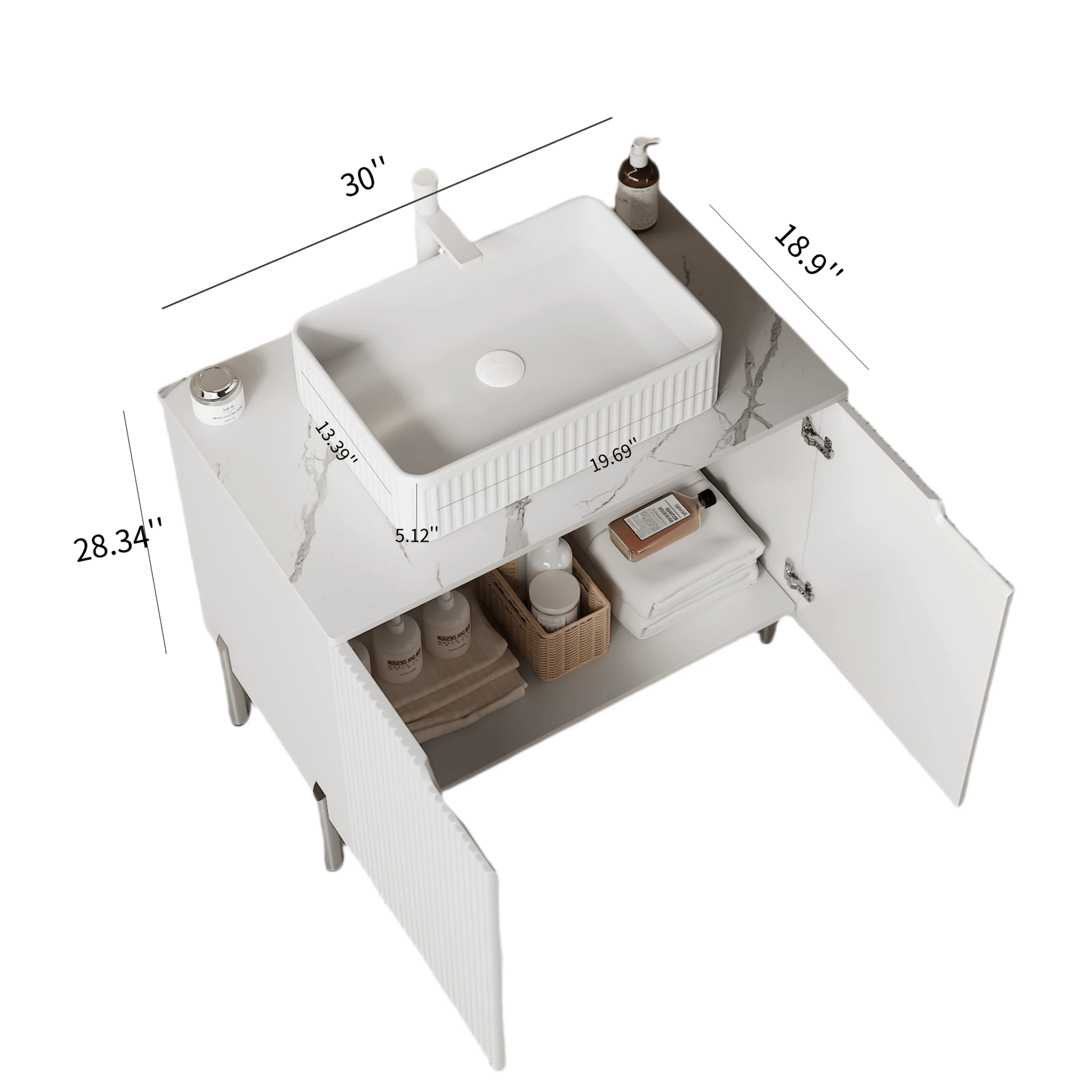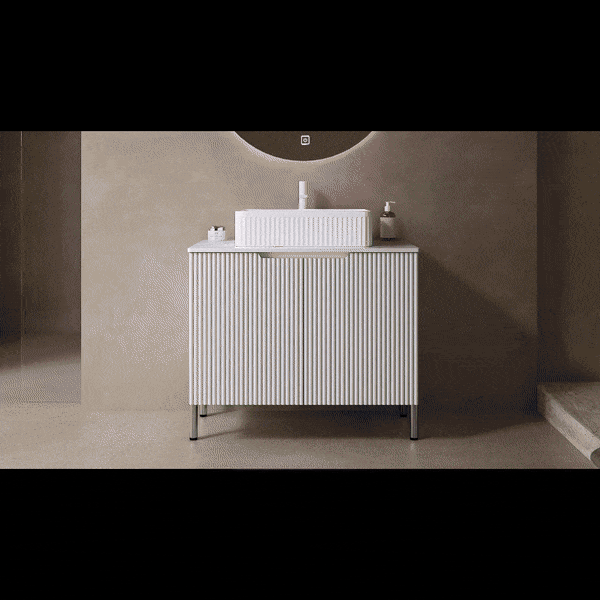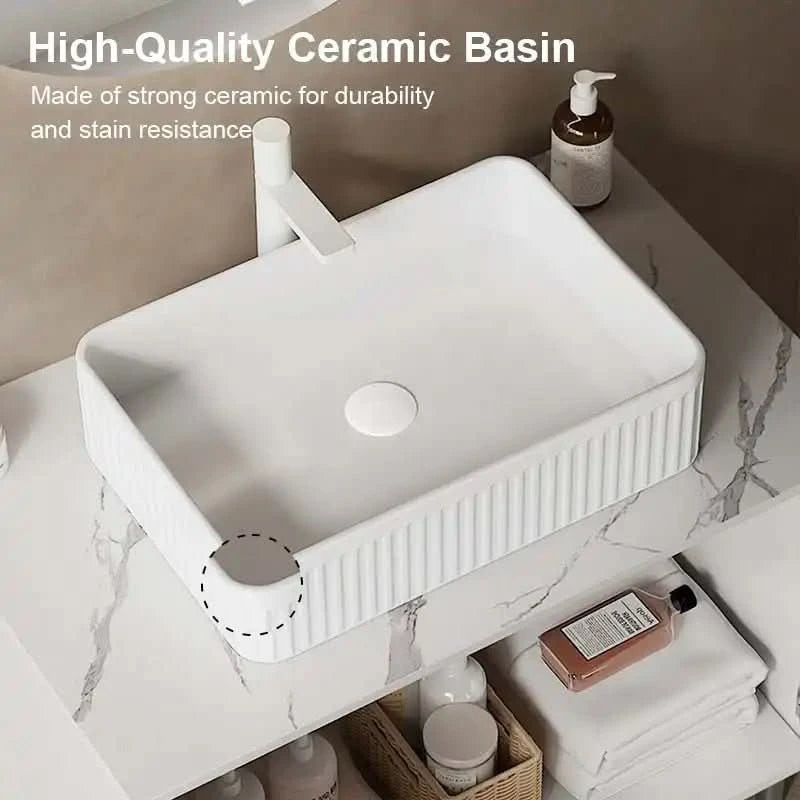
It makes sense to use solid real wood in the bathroom, perhaps because it gives a warm feeling, has a great texture, or simply because it will become more flavorful over time rather than looking old and outdated. Just like the very popular contemporary mid-century style, a lot of classic solid wood furniture, if properly preserved, instead appreciates in value over time and can even fetch a very high price. But let’s be honest: bathrooms are brutal on furniture. Constant moisture, fluctuating temperatures, and (if you have kids) the occasional shampoo explosion can wear down even the best pieces.
So how do you build a lasting real wood bathroom vanity? More importantly, how do you ensure it doesn’t turn into a warped, water-stained regret? Lab furniture may be hiding the secret to durability. Yes, you read that right. Laboratories are constantly exposed to harsh chemicals, frequent cleaning and high humidity environments, yet their furniture stays intact for years. Maybe it's time we learned their maintenance secrets from the pros.
Today I'm going to talk about how to make a more durable and functional bathroom vanity.
1. To Choose The Right Wood (Because Different Woods Have Different Properties and Applicable Scenarios)

You love real wood—same. But not all woods are bathroom-friendly. Some absorb moisture faster than a sponge, while others resist water damage like a champ.
Best woods for bathroom vanities:
- Teak – The MVP of moisture resistance. Naturally high in oils, teak shrugs off humidity and looks stunning.
- White Oak – It is strong, durable, waterproof, and has a natural and beautiful texture that looks good on its own without additional decoration.
- Maple – This is the favorite material for cabinets because it is strong and durable.
Avoid these in high-moisture areas:
- Pine – Soft and porous. It’ll soak up water and warp faster than you can say "humidity."
- MDF (Medium-Density Fiberboard) – Cheap, but once it gets wet? Game over.
Lab trick: Many laboratory cabinets use hardwood veneers over moisture-resistant cores—a great way to get the real wood look without the warping risk.
2. The Secret Sauce: Laboratory-Grade Finishes

Ever noticed how lab furniture never seems to get water rings, stains, or scratches? That’s because they use industrial-grade finishes designed to handle harsh chemicals, spills, and repeated cleaning.
For a real wood vanity that lasts:
- Opt for marine-grade varnish – If it works on boats, it works in your bathroom.
- Try polyurethane – A clear, strong, water-resistant sealant that protects without hiding the wood’s beauty.
- Go for an oil finish – Tung oil or teak oil penetrates deep into the wood, making it water-resistant while enhancing the grain.
Pro Tip: Skip wax-based finishes—they may look good initially, but they break down quickly in humid conditions.
3. Elevate Your Vanity (Literally!)

Water pooling around the base of a vanity = disaster. That’s why so many laboratory cabinets are wall-mounted or have elevated legs—it keeps them safe from spills and makes cleaning easier.
Best options:
- Floating vanities – They make a bathroom feel bigger and eliminate moisture buildup at the base.
- Vanities with stainless steel or rubber-capped legs – A subtle but effective way to prevent water damage over time.
4. Borrowing a Lab Trick: Seamless, Waterproof Countertops

Here’s a lab-furniture hack that can change the game for your bathroom vanity: seamless countertops. Lab surfaces are designed with minimal joints to prevent bacteria, mold, and water damage.
Best options for a bathroom:
- Quartz – Non-porous, stain-resistant, and requires zero maintenance.
- Solid surface materials (like Corian) – Seamless, waterproof, and looks sleek.
- Stainless steel – A bit industrial, but if labs love it, your vanity might too.
Avoid wood countertops in humid bathrooms—even if sealed, they can swell and stain over time.
5. Soft-Close, Humidity-Proof Hardware (Yes, It Matters)

Moisture isn’t just hard on wood—it also destroys cheap hardware. If you’ve ever had a vanity drawer that sticks, squeaks, or starts sagging, you know the struggle.
Steal this from lab furniture:
- Stainless steel or brass hardware – Won’t rust, corrode, or degrade over time.
- Soft-close hinges and drawer slides – Less wear and tear = longer-lasting vanity.
- Magnetic or silicone-sealed doors – Helps keep moisture and humidity from sneaking in.
Small changes, but they make a big difference.
6. Don’t Underestimate Ventilation

This might not be the most exciting topic, but trust me—good ventilation is what separates a vanity that lasts 5 years from one that lasts 50.
How to prevent trapped moisture:
- Install a high-quality exhaust fan and actually use it.
- Keep the vanity area dry—wipe down excess water after showers.
- Leave cabinet doors slightly open now and then to let air circulate.
Fun fact: Lab storage units often have built-in vents to keep air moving and prevent moisture buildup. Who knew science labs had bathroom wisdom to share?
7. Keep It Low Maintenance (Because Who Has Time?)

No matter how well you build your vanity, low maintenance is key to keeping it looking great for years.
Here’s how:
- Wipe down spills immediately – Water rings and stains love real wood.
- Deep clean every few months – Use a mild cleaner and check for any damage early.
- Re-seal the wood every couple of years – Keeps it looking fresh and water-resistant.
If you love that perfectly worn, aged wood look, a little patina over time isn’t a bad thing. Just make sure it’s intentional wear—not damage.
Final Thoughts: The Science of a Long-Lasting Vanity

The truth is, bathrooms are one of the harshest environments for furniture. But with the right materials, finishes, and smart design choices (including borrowing a few lab-grade tricks), a real wood bathroom vanity can last decades—without looking like it survived decades.
So whether you’re planning a new vanity or just want to extend the life of your existing one, think like a scientist: durability, water resistance, and smart design always win.
Now go forth and build the best bathroom vanity of your life—one that actually lasts.
FAQs
How can I protect the bottom of a real wood vanity from water damage?
You can paint the bottom edge with a waterproof varnish or polyurethane coating, install a rubber mat to prevent water from pooling, and put a small waterproof mat underneath the dresser for extra protection.
Can a bathroom vanity be made from reclaimed wood?
Yes, but do a good job of damp-proofing it. Check for cracks first, patch the gaps with wood filler, and also add a layer of moisture resistant plywood to the bottom to make it more stable and durable.
How does humidity affect real wood vanities, and how can I prevent warping?
Humidity can cause warping or cracking. Use stable wood types like teak or oak, keep bathroom humidity between 40-60%, and install a good exhaust fan for moisture control.
Related Articles
If you're interested in bathroom vanities, I've compiled a few articles on the subject, so feel free to check them out! Feel free to share any thoughts or questions in the comments section.


